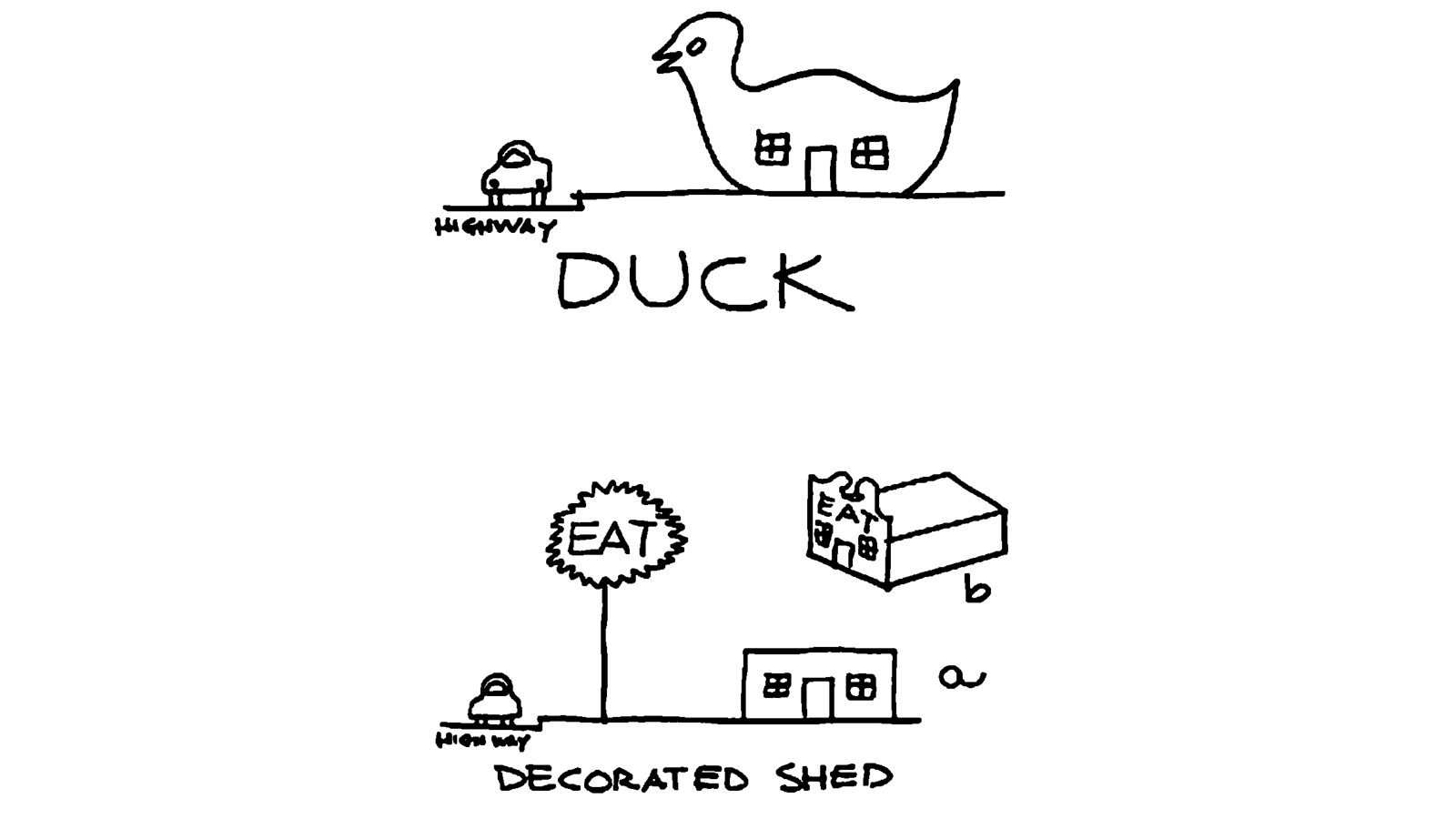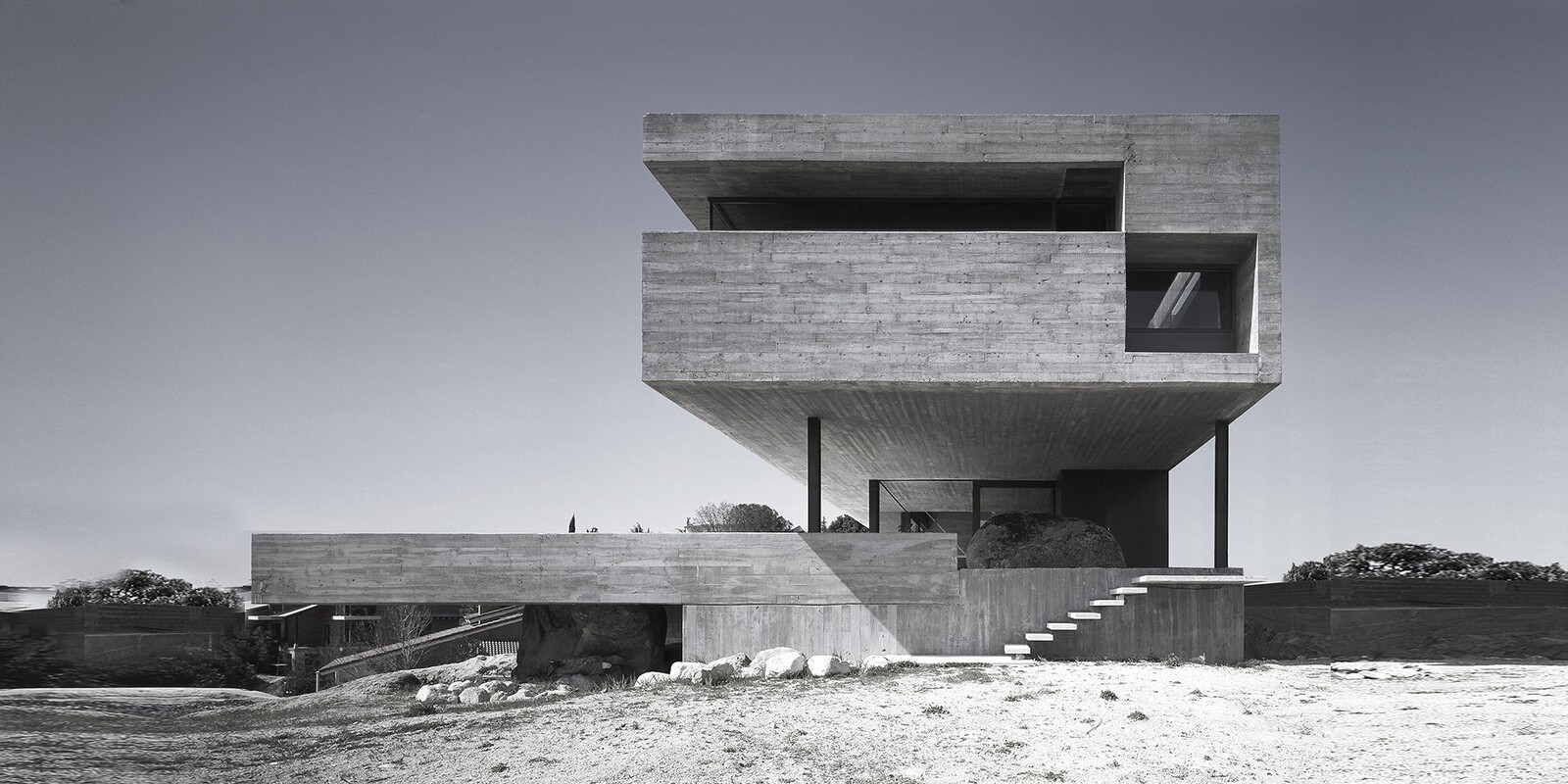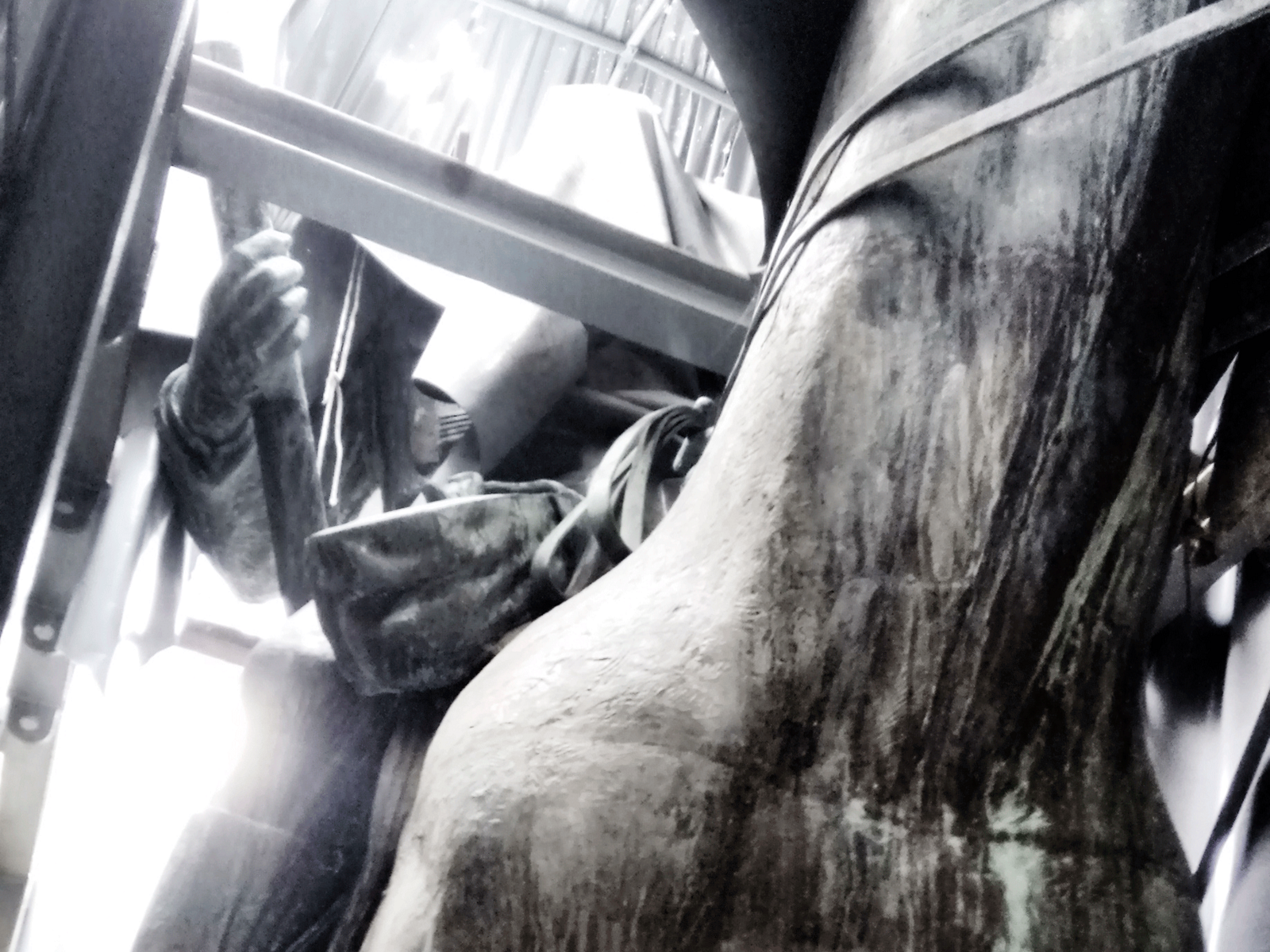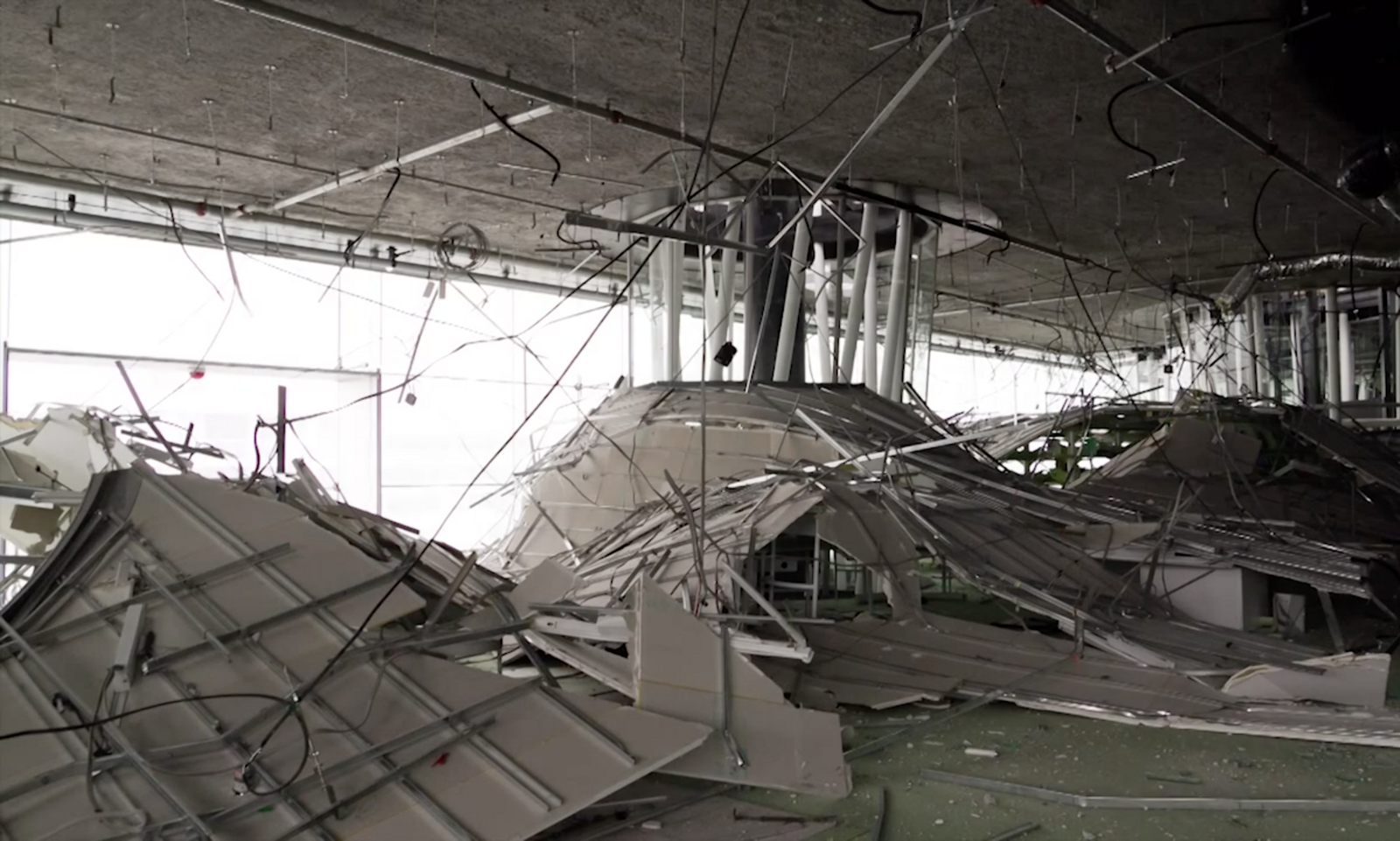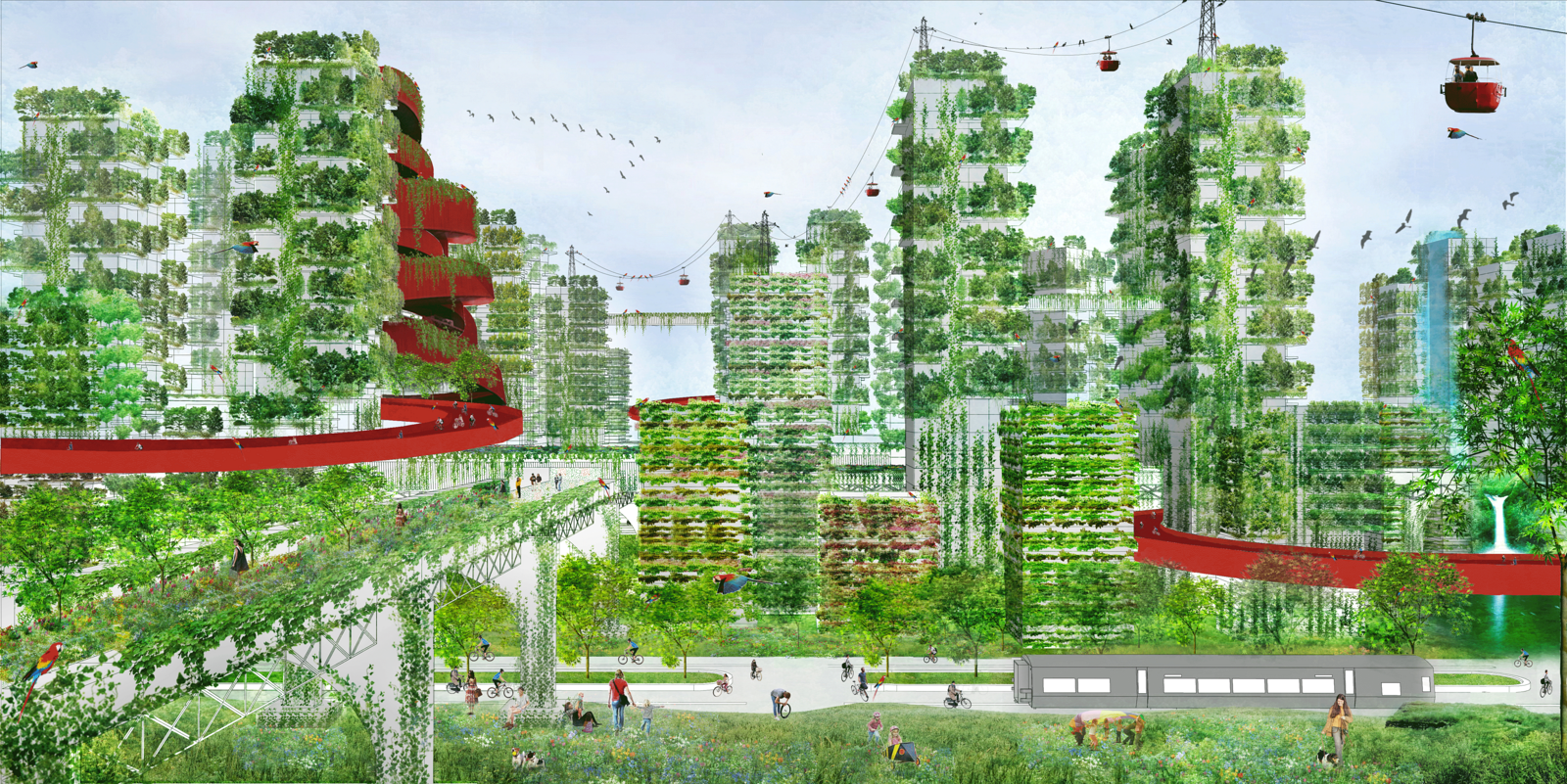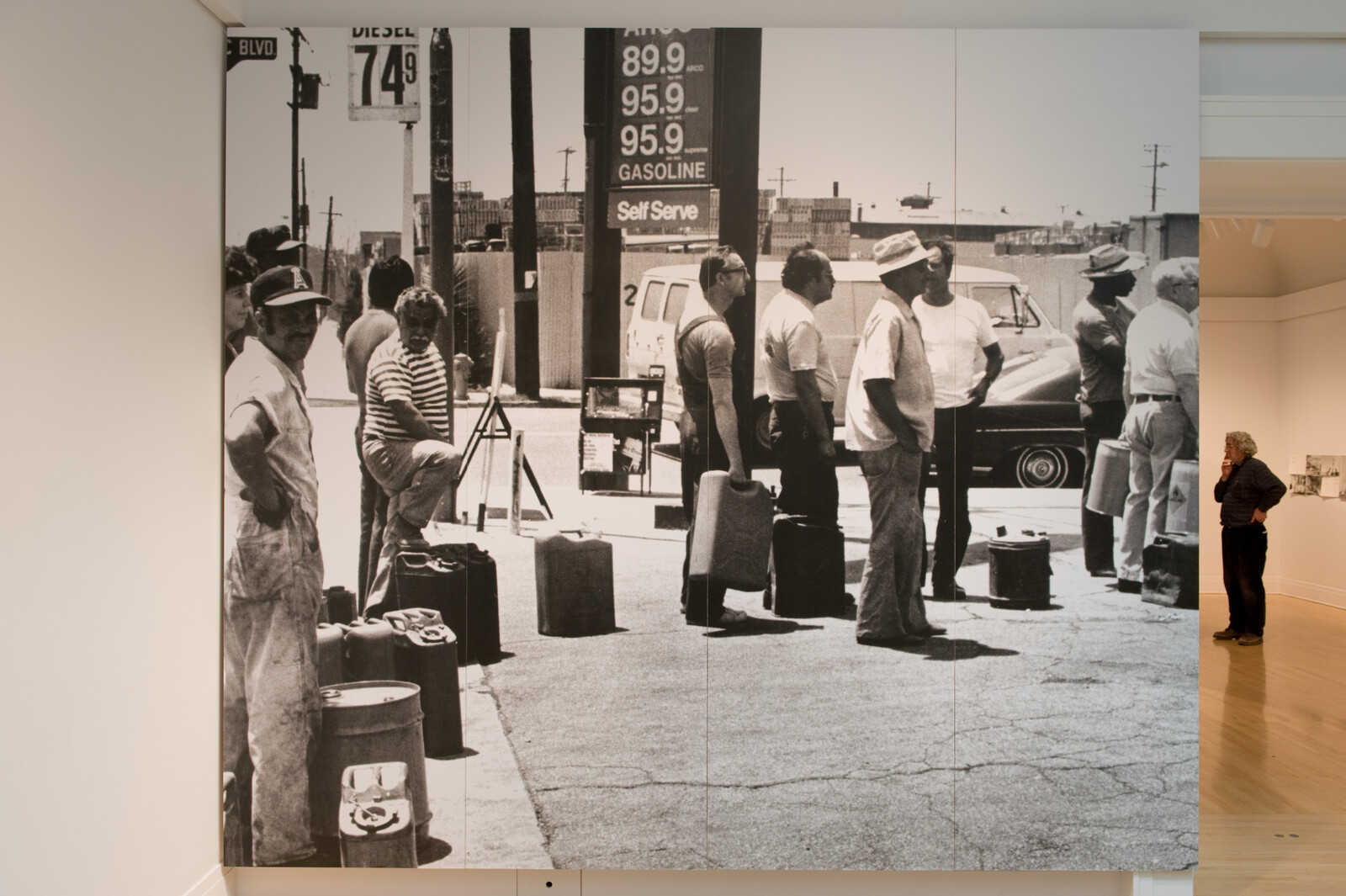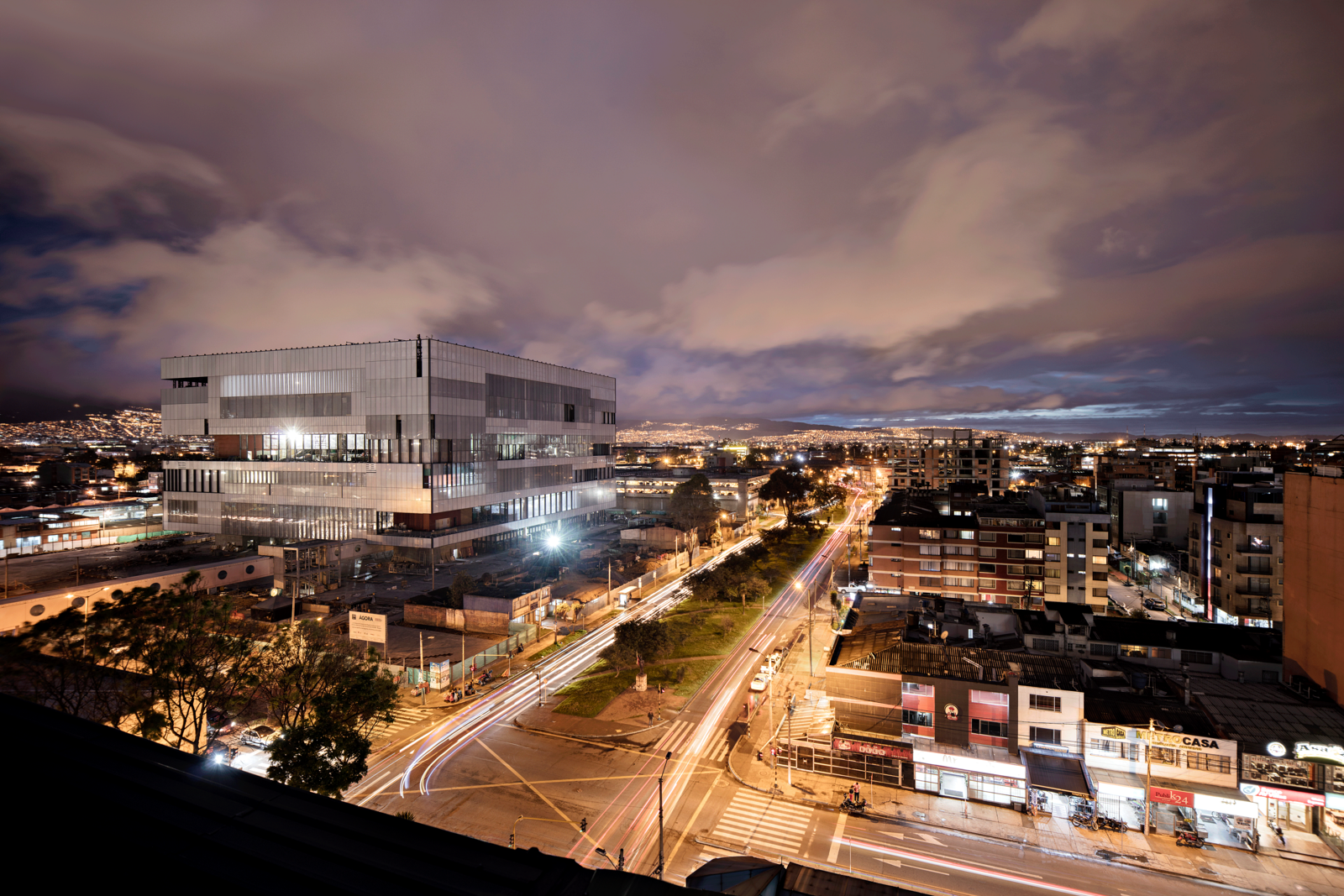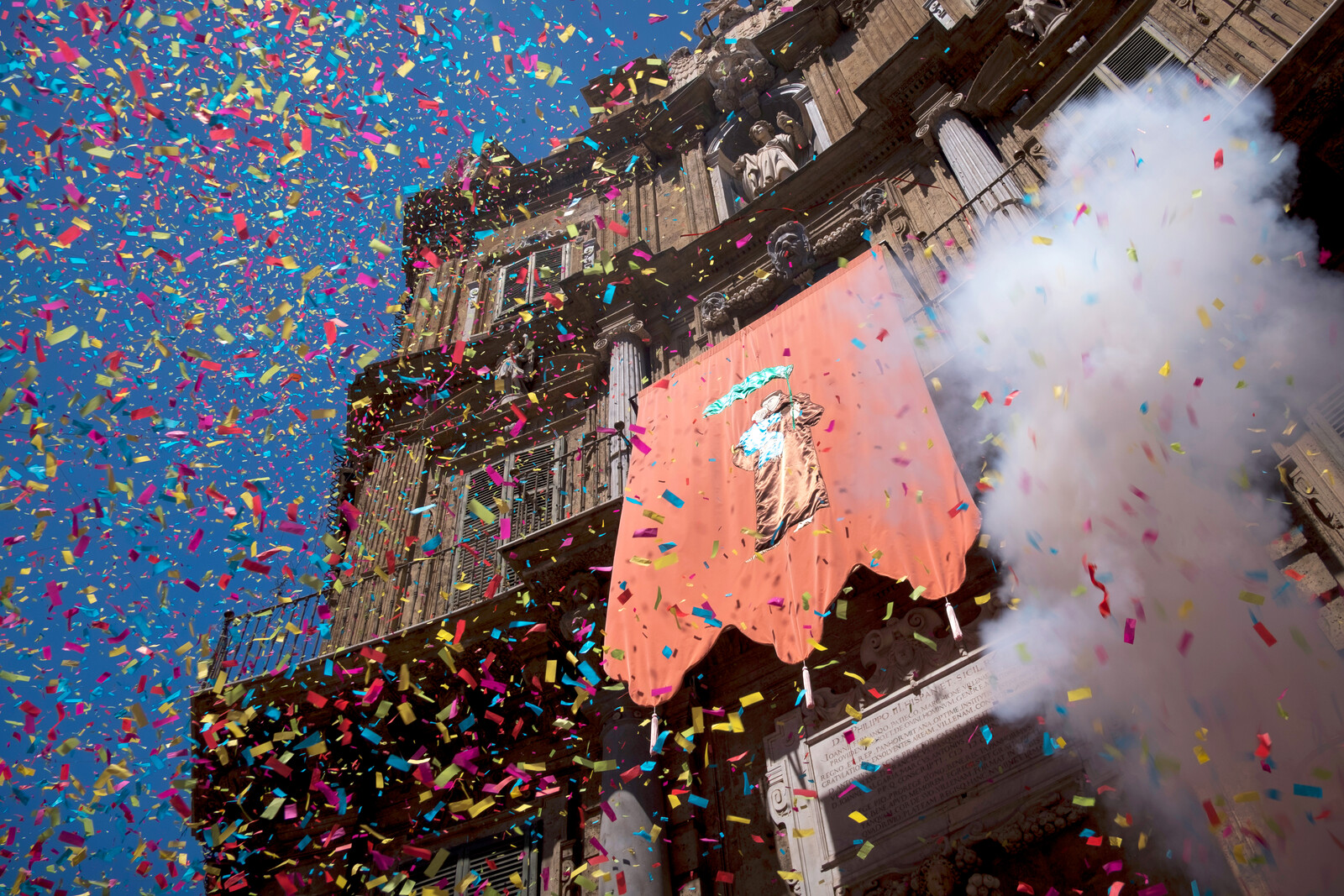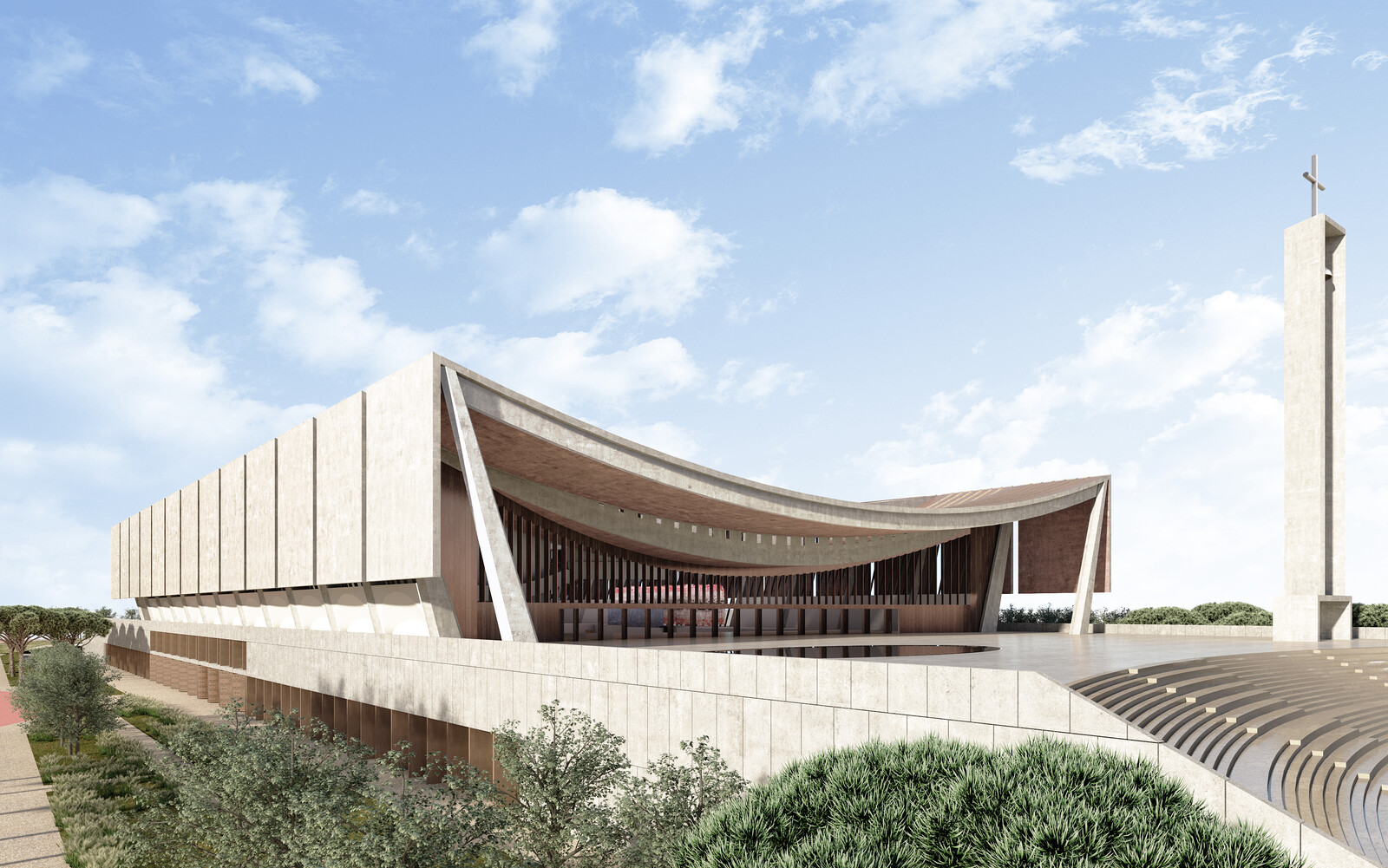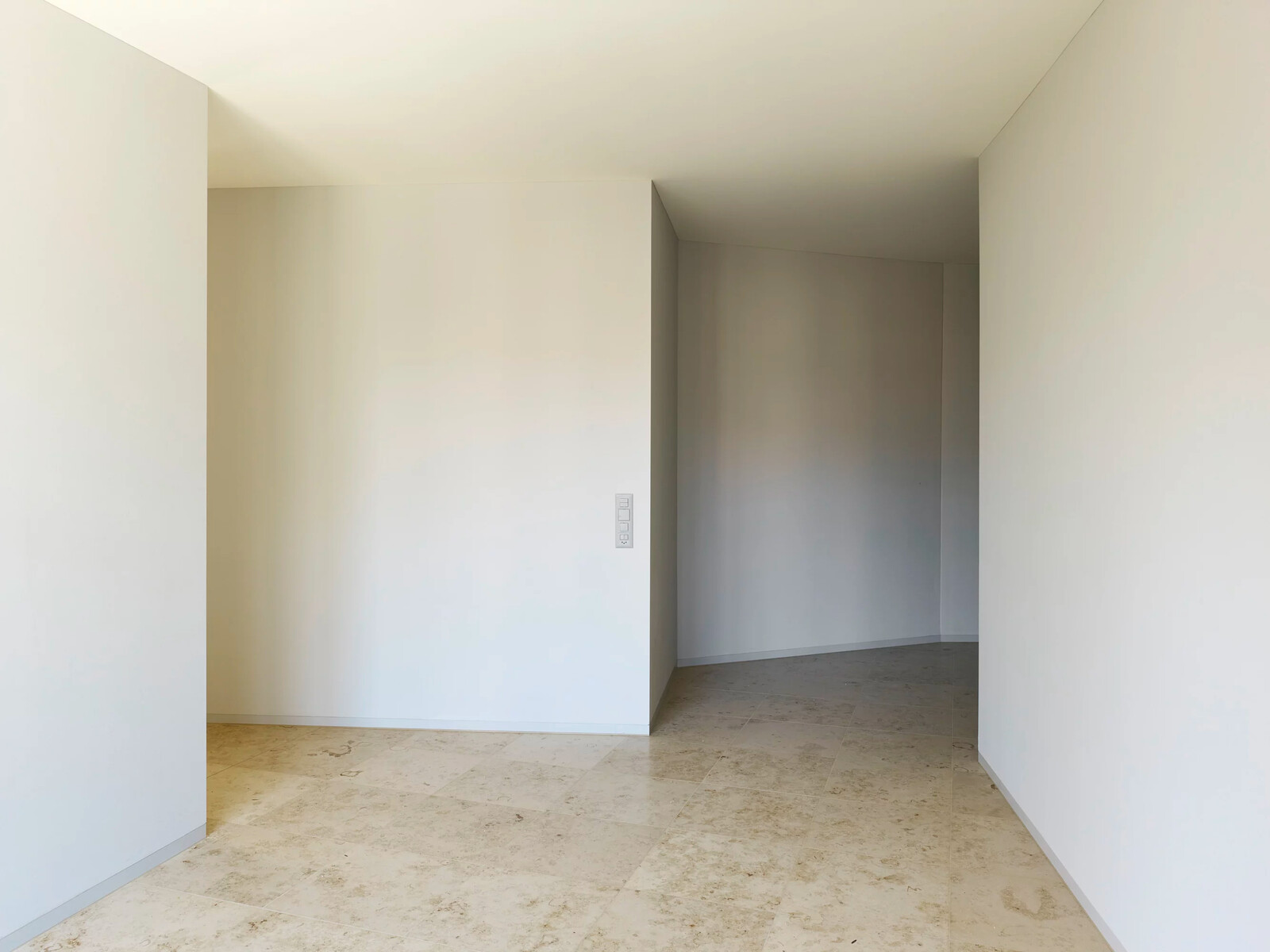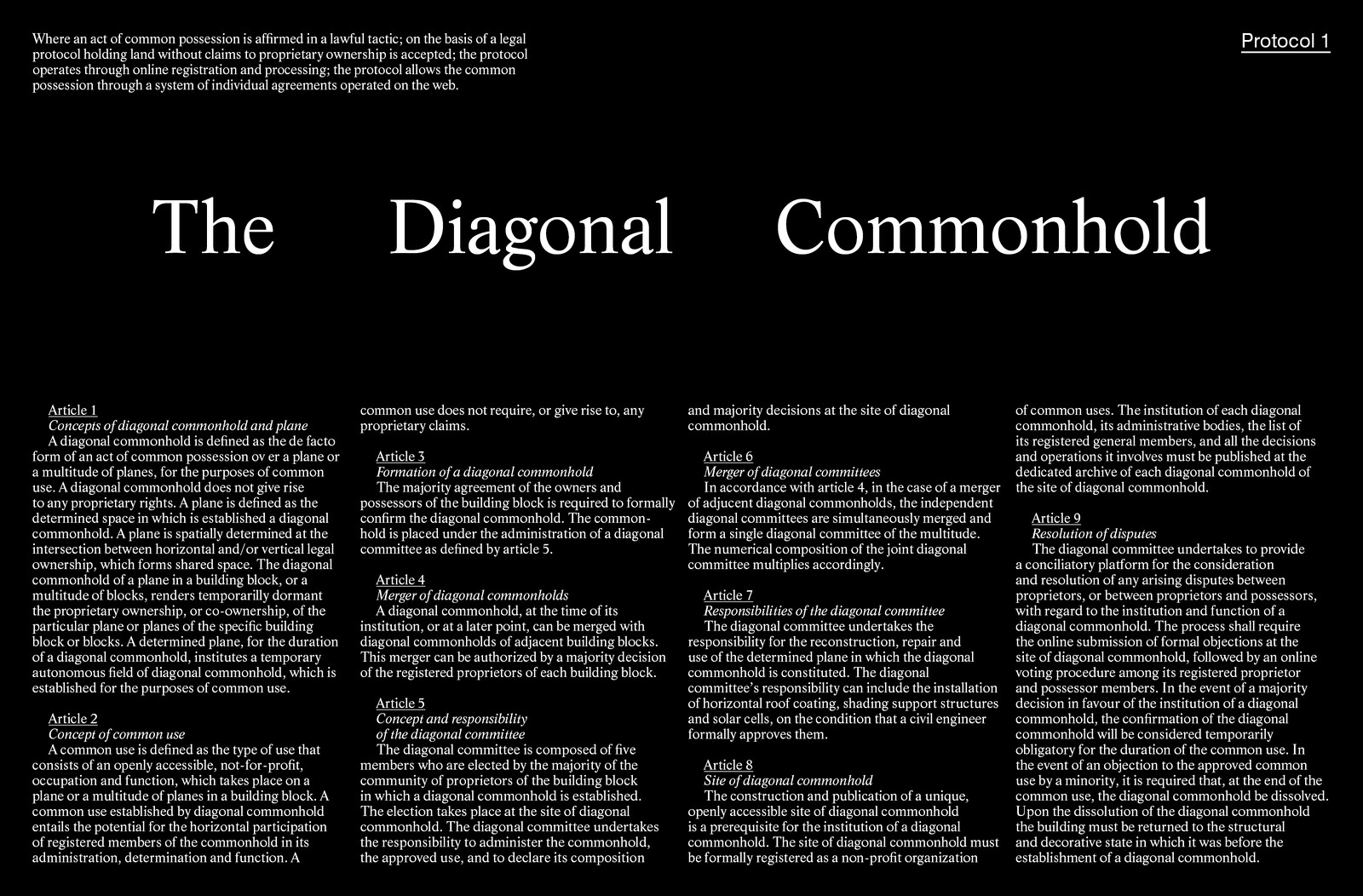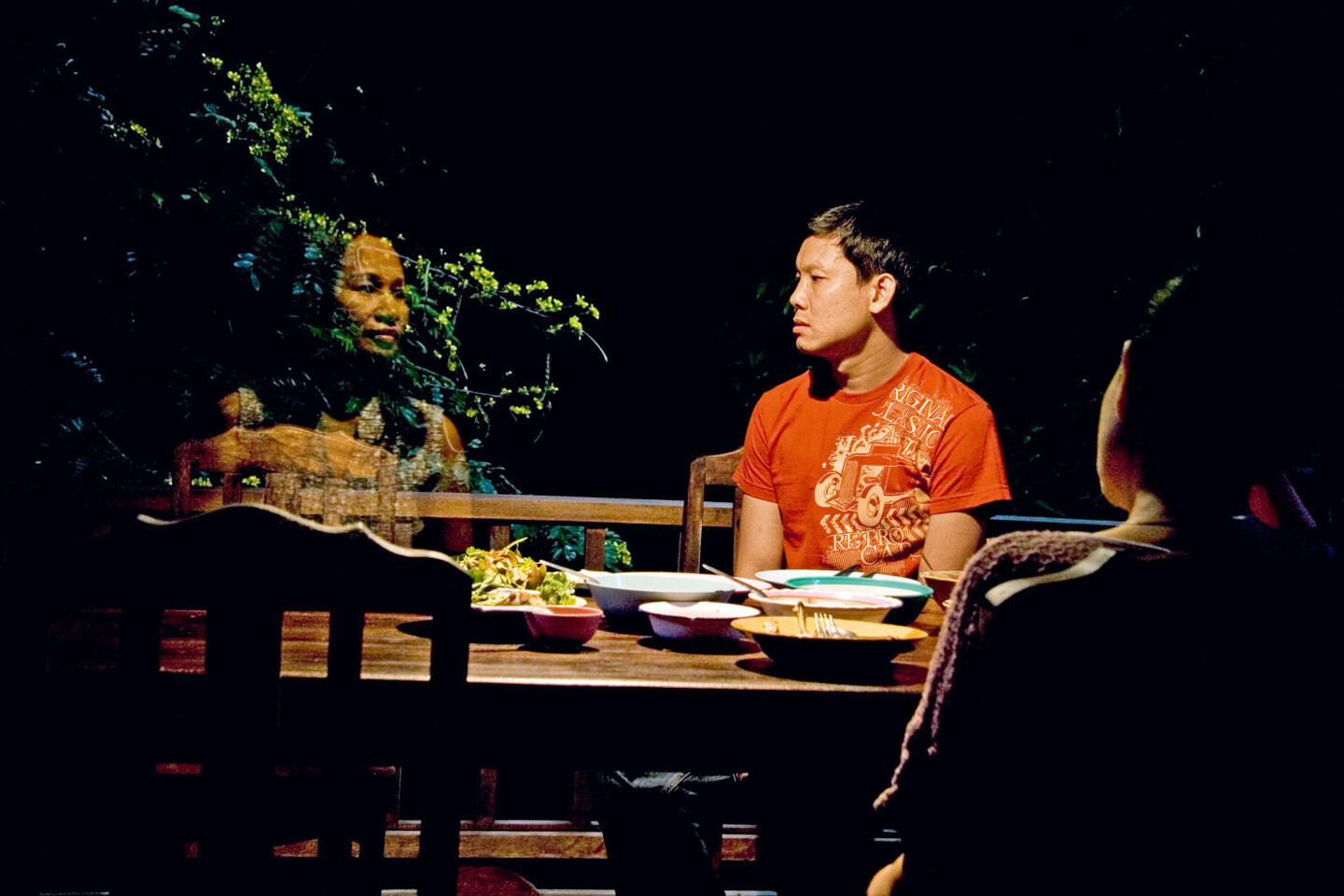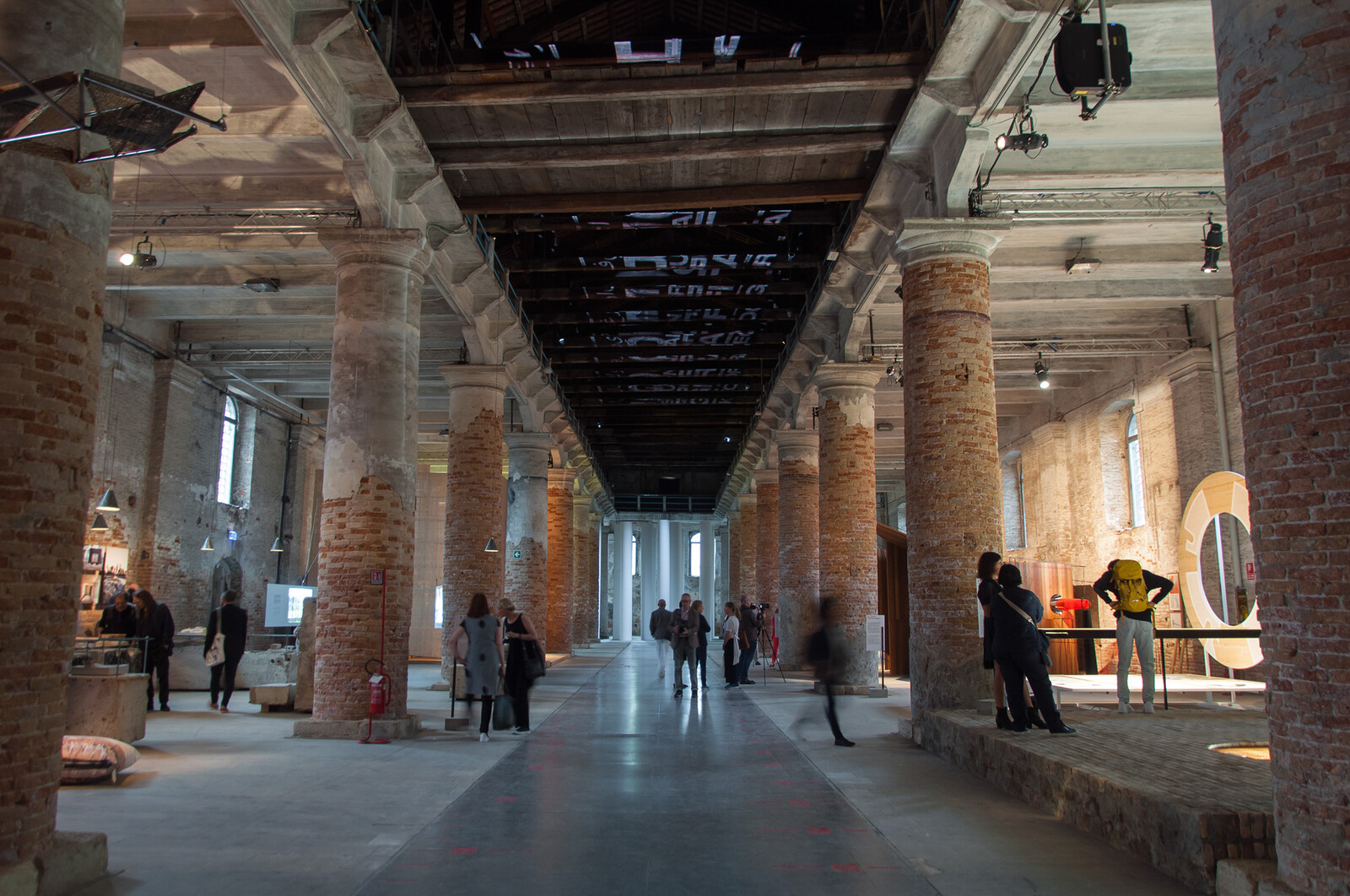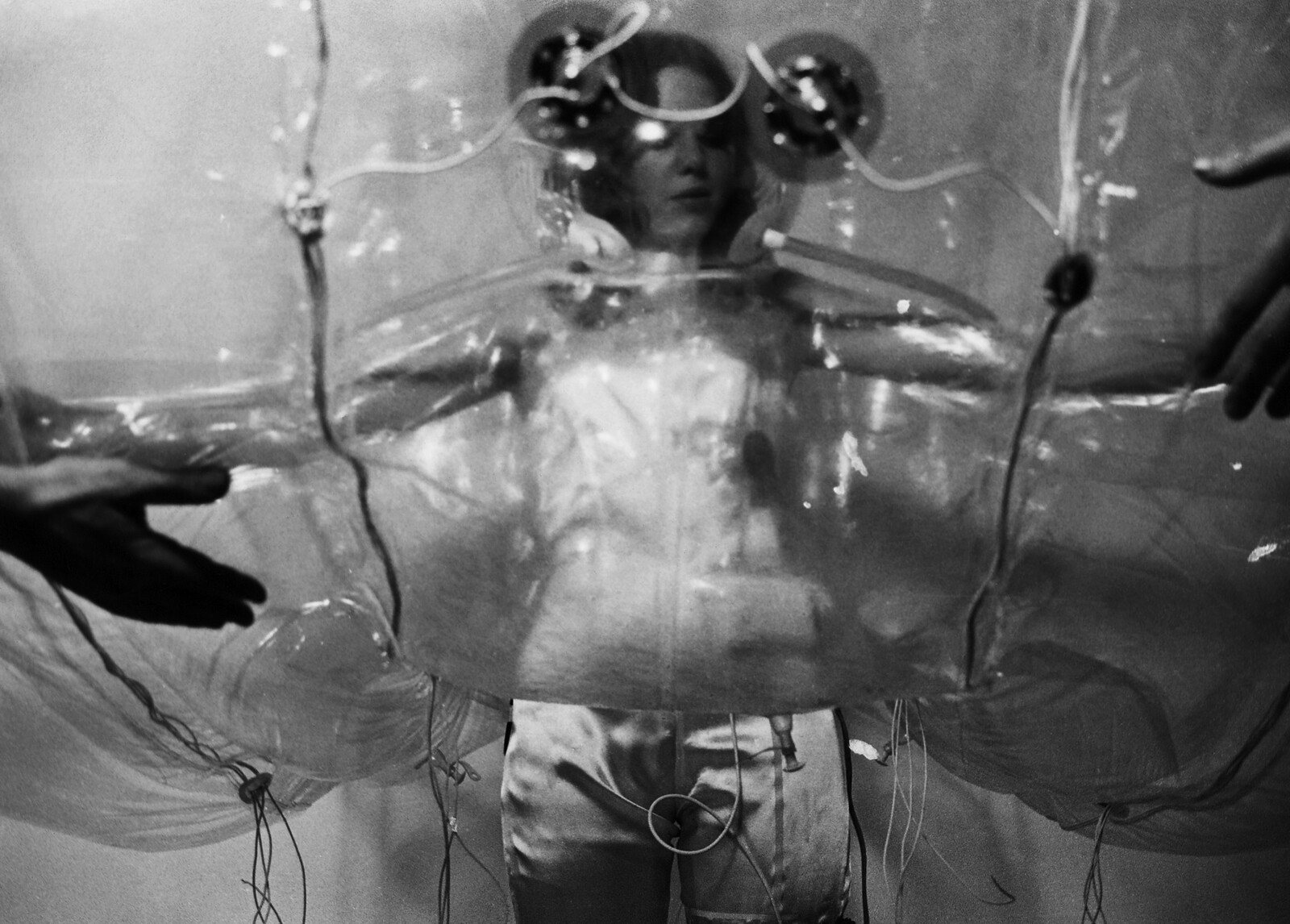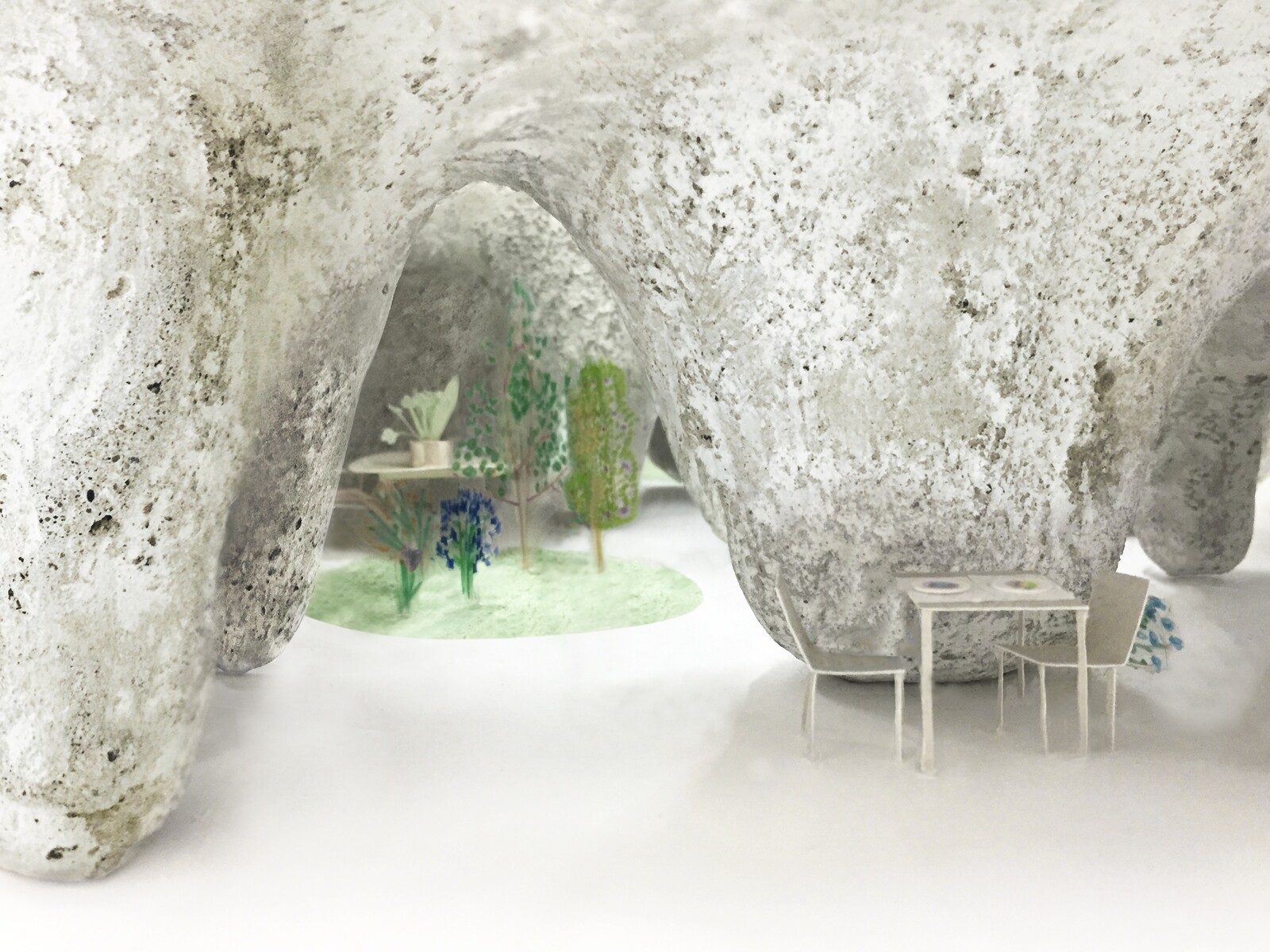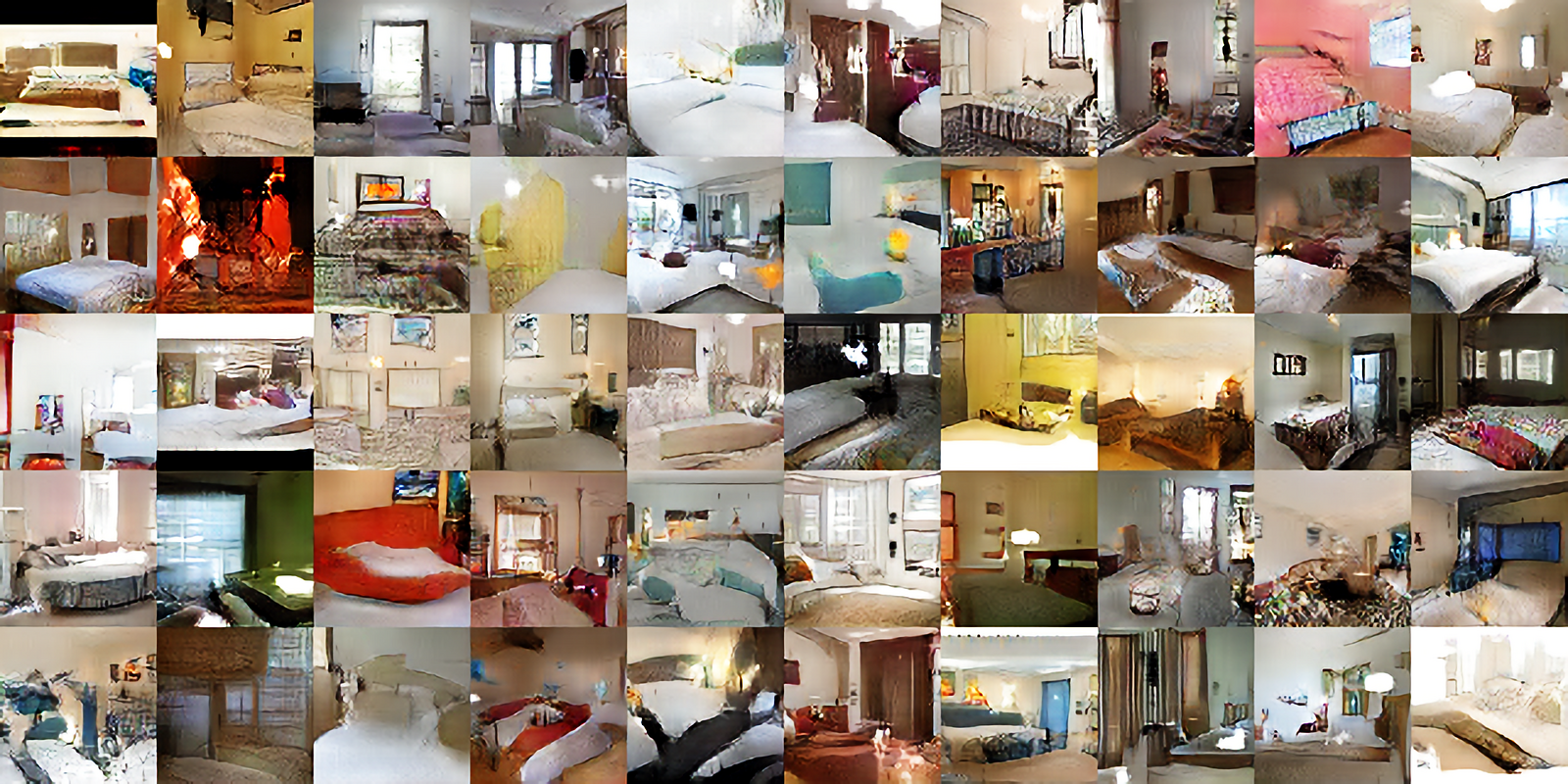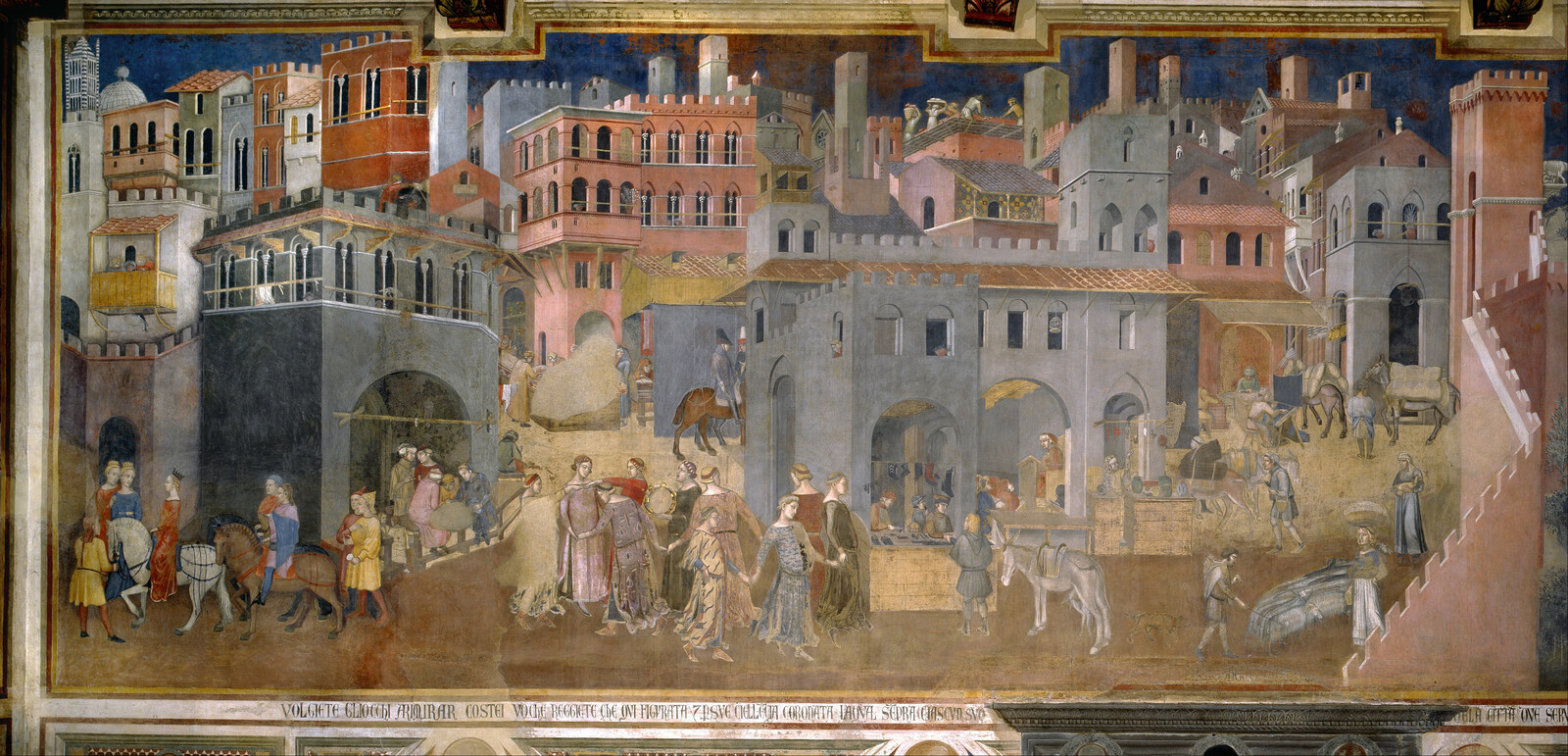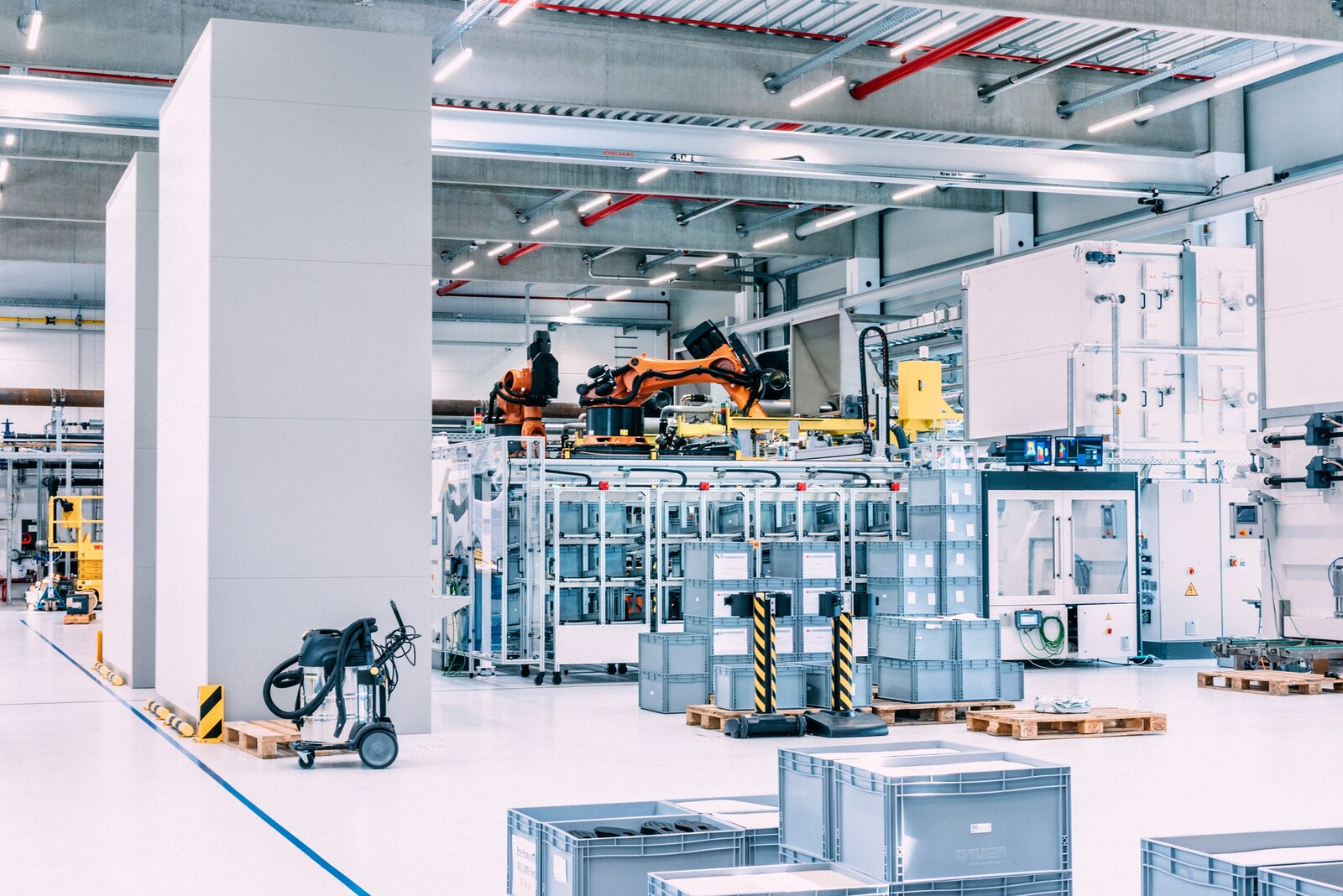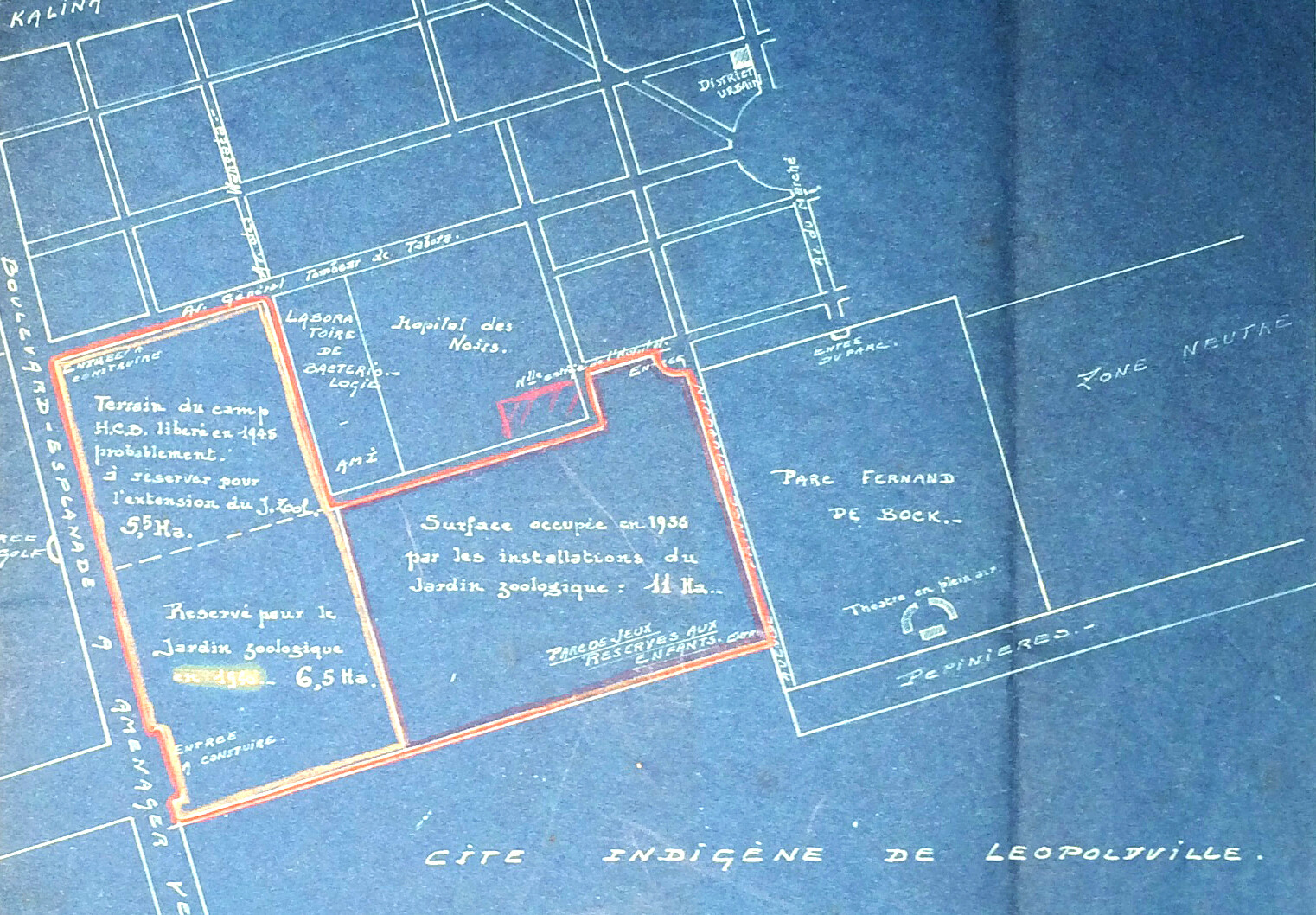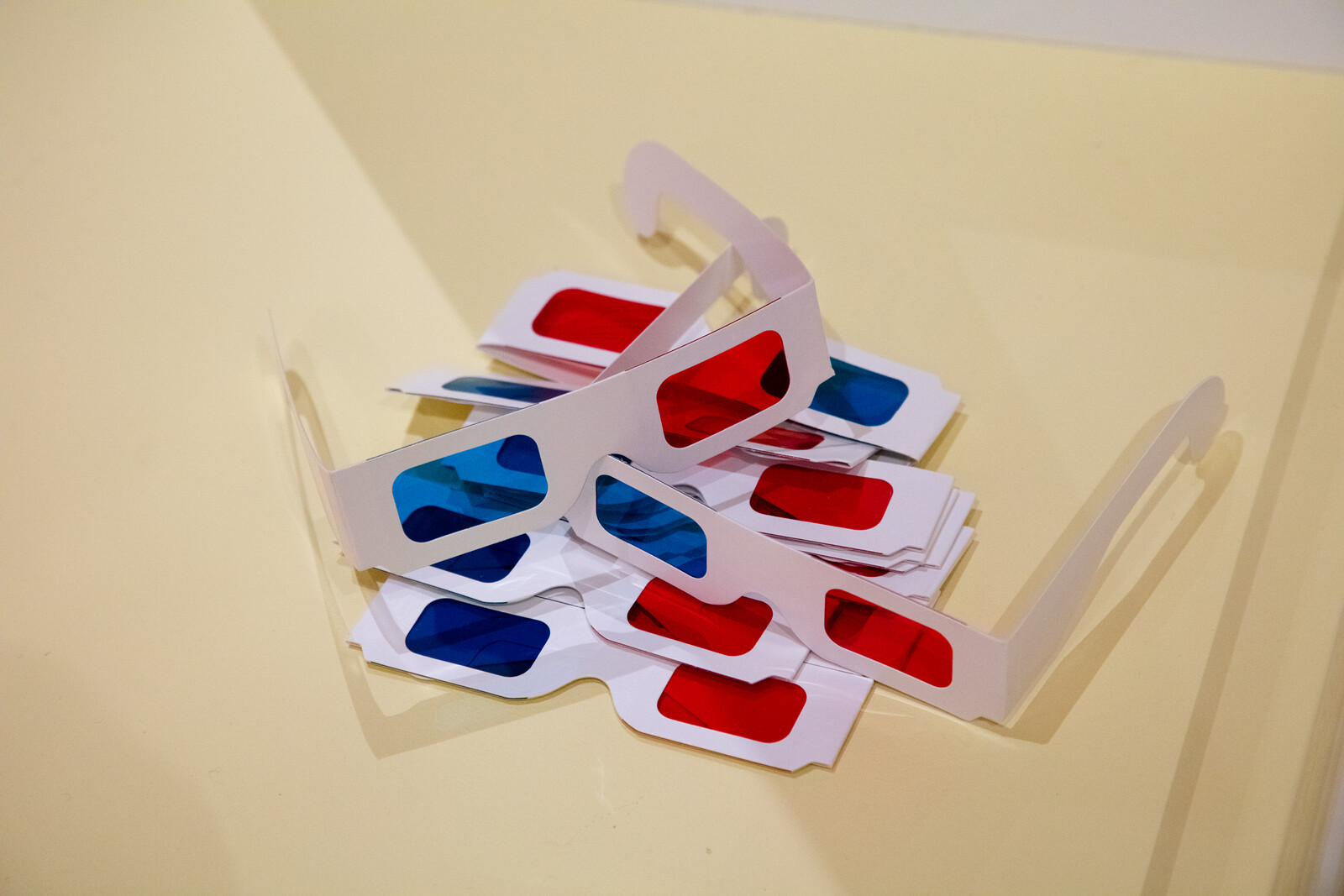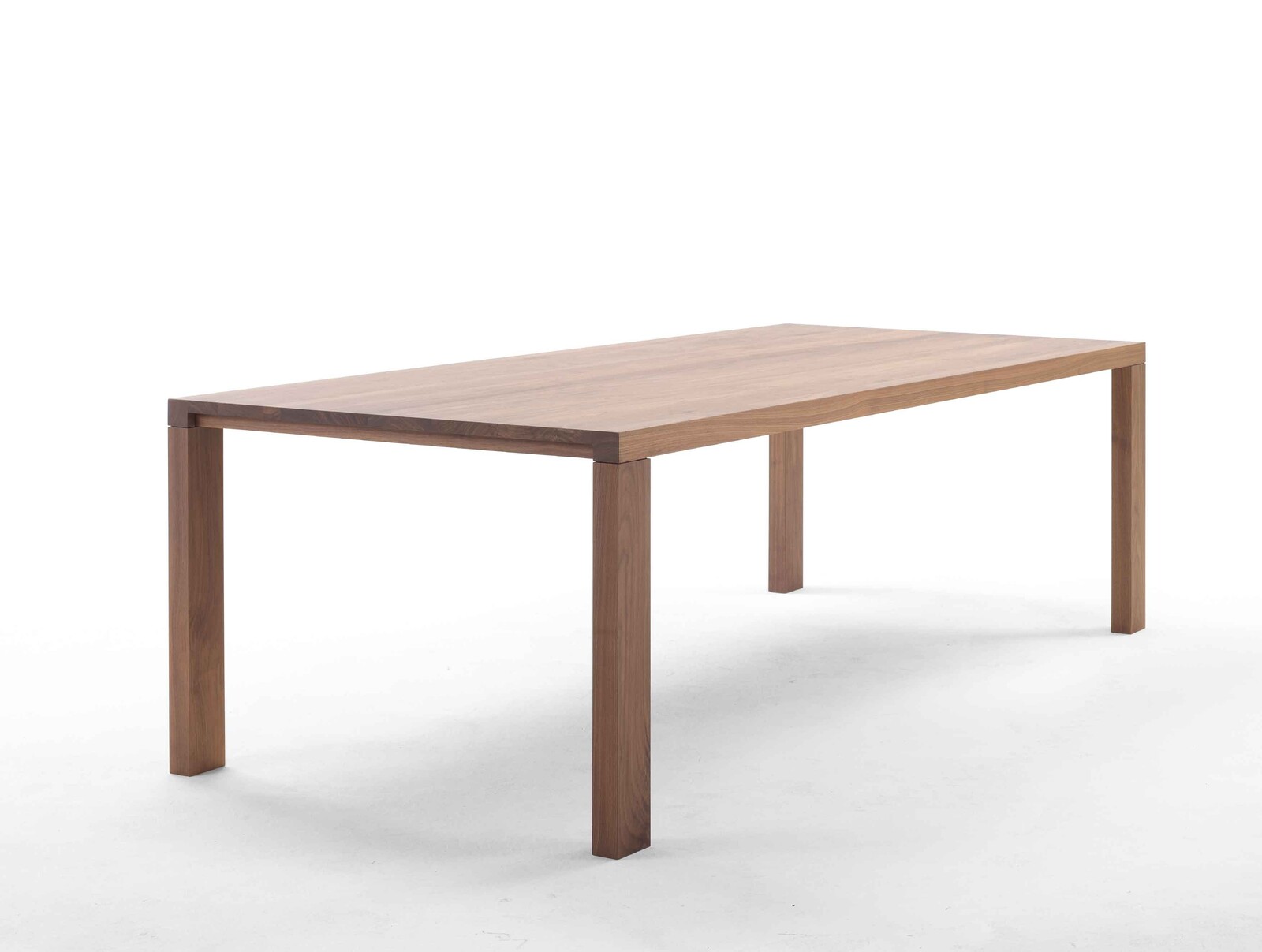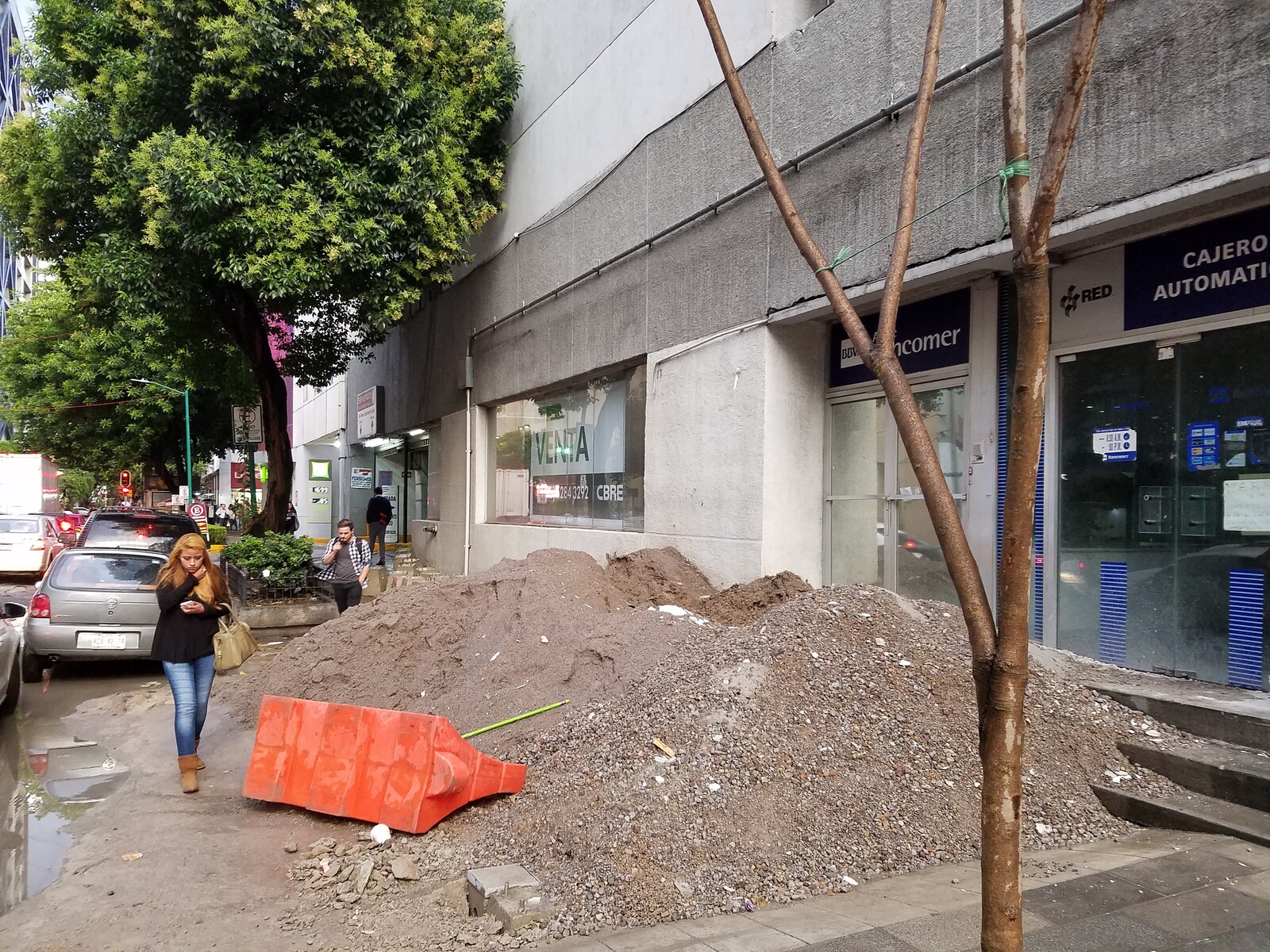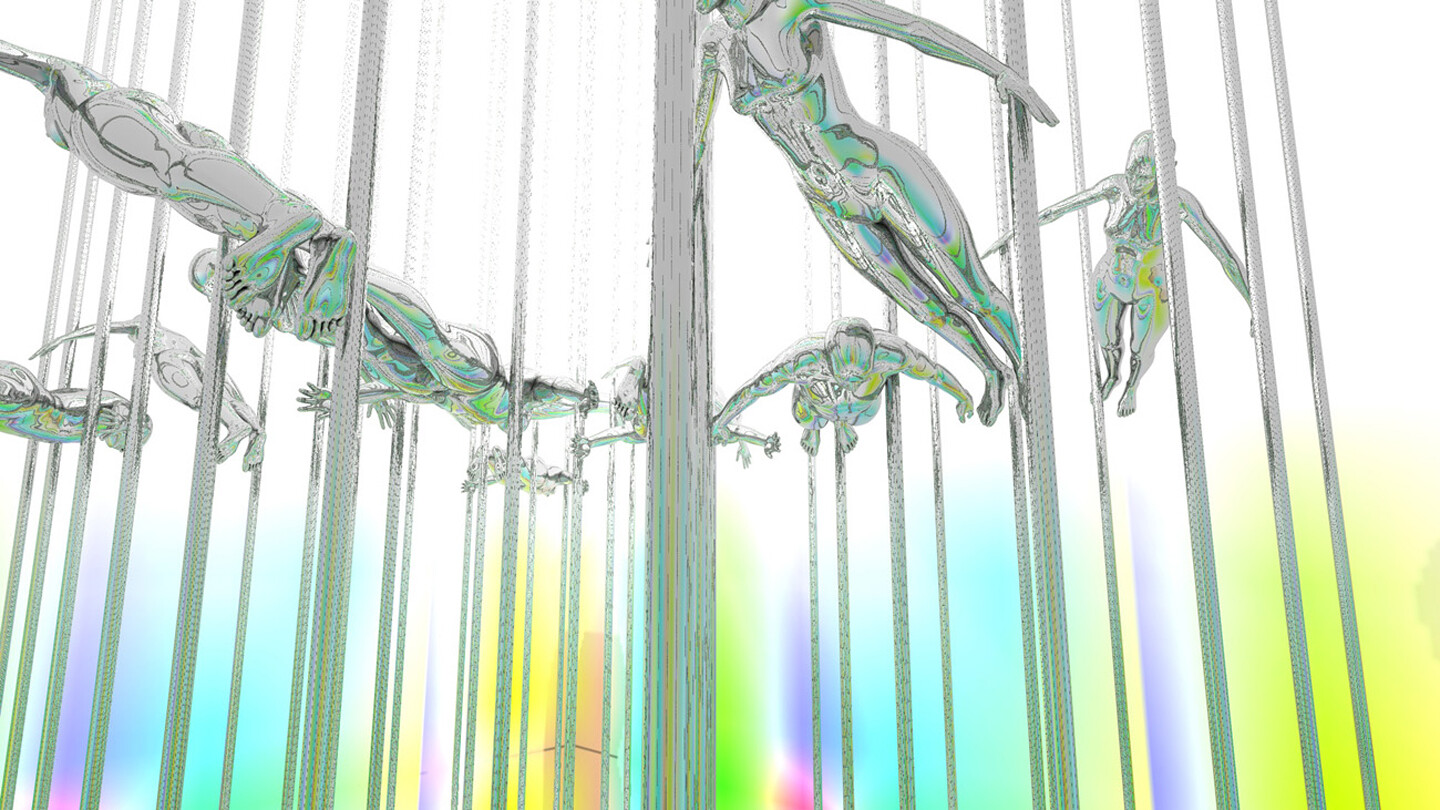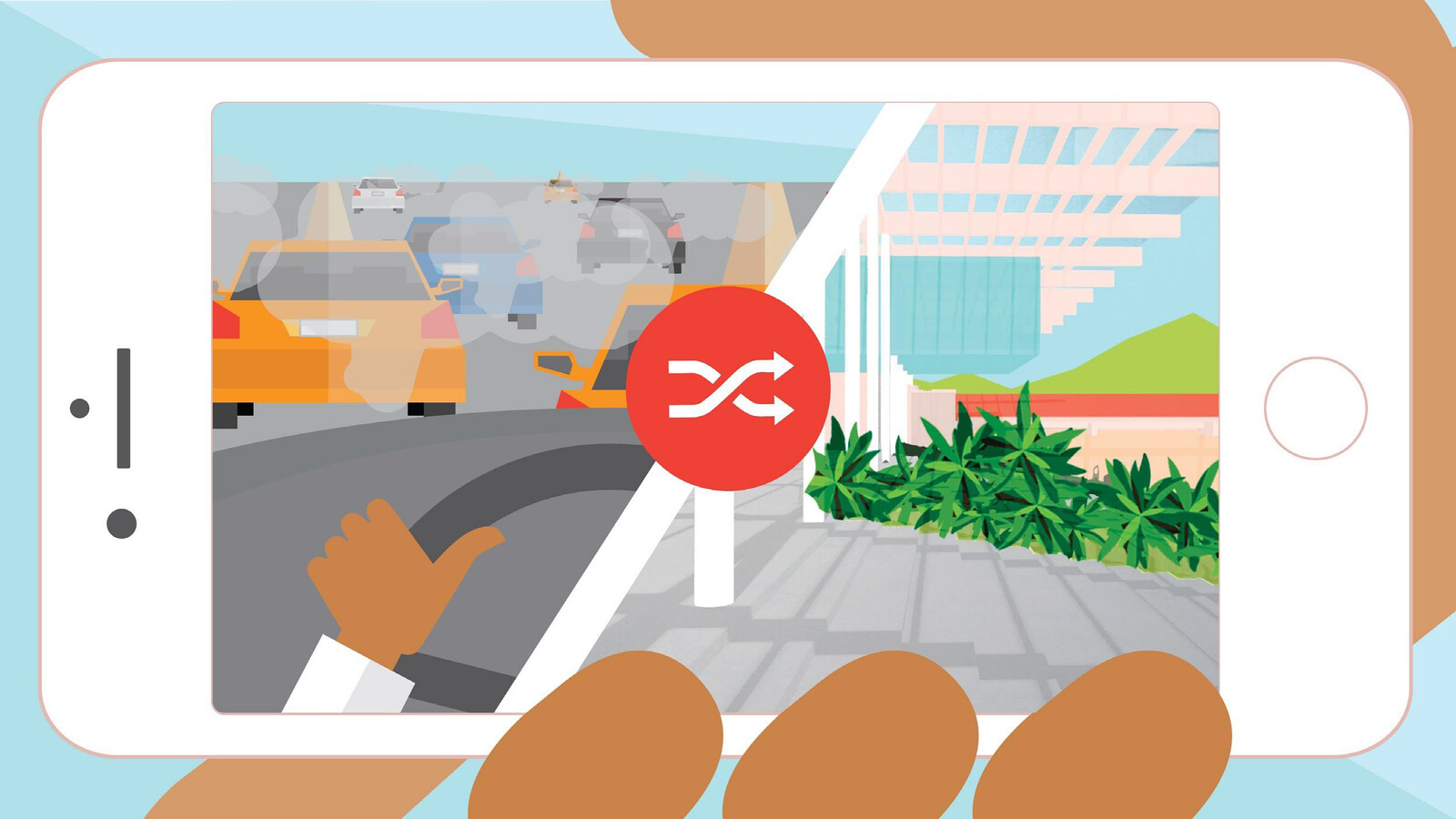Nikolaus Hirsch What is design?
Paola Antonelli I am not able to answer that question. It’s a little bit like asking what art is or what food is. A definition is not possible, or at least I am not able to give one. I have my own ways to distinguish design from art, for instance, but not really from engineering.
NH And from architecture?
PA Architecture is part of design. I studied architecture at the Polytechnic of Milan, and because of that I have a sort of panic view of design. I had teachers like Achille Castiglioni, Marco Zanuso, Tomás Maldonado, Franca Helg, and Cino Zucchi. There was no distinction. It was quite typical for Italian architecture and design to be taught together. It used to be, at least. There was no separation. Also, we were 15,000 students, only in Milan, only in architecture. So, you can imagine it was very theoretical, not very much practice happened at all. But theory made it so that design incorporated architecture, fashion, sometimes even food. And Castiglioni used to say that Italian design was so good because there were no design schools.
NH Maybe he was right.
PA Even though I might be romanticizing the past, I think that specialization at the very beginning of an education curriculum is a disadvantage. It would be great to start with a core program, like the good old times of the Bauhaus. And then diversify. Thinking that architects are other than designers is really misleading. And I also believe that architecture and design thrive better in a polytechnic environment rather than in an art school environment.
NH Today we live in a world where almost everything is designed. There are less and less things—tangible and intangible—that are not designed. How would you define the role of designers in a context of expanded design?
PA But they never were un-designed. It’s been the same since the beginning of the built world. We didn’t have a digital dimension back then, of course, but pretty much everything, always, was designed. The role of designers is as incredibly important today as it’s always been. Right now, however, it’s discounted. I care about design literacy. I would like citizens to be more aware of design so that they can develop their own critical sense; so that they can push back if they don’t feel that what is produced and presented to them is good enough, and to be more involved. Design is a force to reckon with. And once again, when I say design, I also include architecture, landscape design, urban planning, and more. Citizens that know how to make good use of design, that have knowledge of it, are going to be able to use that power, also to explain how things should be to politicians, to industrialists, and to all the other sectors.
NH It has become obvious that our environment has fundamentally changed through our design. Your upcoming Milan Triennale exhibition, Broken Nature, tries to reckon with this fact. How do you see the role of designers in this situation?
PA If we think in eschatological terms, I believe we, humans, are going to become extinct anyway. But I think the design can help us design a better ending, so the next species will remember us with a little more respect, not as complete morons. I think that the essence of design, like the essence of life, is respect. I think respect is one of the best rubrics to live life by. Design is able to change peoples’ behaviors. It’s able to shape the way we live. That’s why I’m talking about design literacy. If citizens were more aware of design, if kids studied design in elementary schools and developed a habit, a culture, then they would be able to be outraged by something that is badly designed or that is disrespectful—of other humans or of nature. Something badly designed is something disrespectful.
NH If we were more educated in terms of design, could we avoid becoming extinct?
PA No.
Nick Axel Do you think there’s any feat of design that might be able to make you more optimistic?
PA I’m very optimistic! I am optimistic within certain limits. It’s interesting because people think that pessimism is pessimist, but it’s not. Skepticism and pessimism are true optimistic stances. Blind optimism is a little bit like having drunk the Kool Aid. And instead, pessimism is keeping your eyes wide open and hoping that humanity will do its best. I find pessimism a much more active and responsible attitude. I don’t really trust excessively optimistic people.
NA I’m curious to hear what you think of the statement that Mark Wigley and Beatriz Colomina made about design in their Istanbul Design Biennial: that “good design is an anesthetic.” In your eschatological terms, it’s the idea that good design might make, or allow us to forgot that we’re about to go extinct; that it dulls the pain. How do you see good design?
PA I can’t say I agree with that statement. To me, good design is something that also reminds us of our destiny––individual death, collective extinction. It depends on what you mean by good. There are so many old adages about design, like “form ever follows function.” I’m always saying, function can also be to make you uncomfortable, or to make you waste time. I’ve always thought that the Tamagotchi is a great design, even though it exists just to inject anguish and unwanted responsibility into your life. So if you think of good design as it was meant in the 1950s, as something that made your life more organically intertwined, that helped industry, whose form followed function, etc., good design can be a bit like a Stepford-Wives kind of anesthetic. But to me, good design, with a small “G,” is design with muscle. It’s design that gives you friction when necessary. It’s design that gives you pain if you want it. What’s important is that normal human beings, not designers or architects, can judge it. You need to be able to say this is good, full stop, or that this is good for me, not for others, not for my children. Good design is an object with a position.
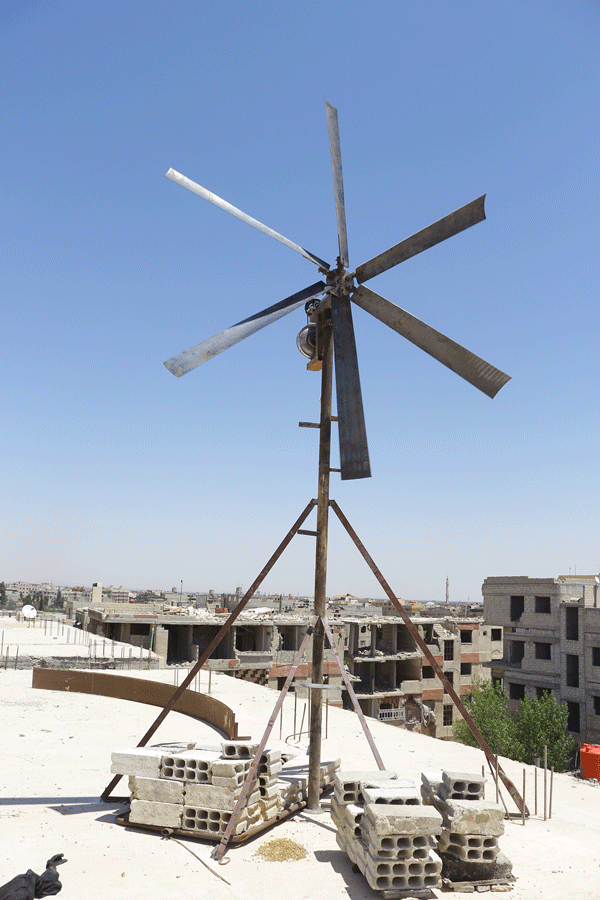

Sigil’s Current Power in Syria investigates electricity as a tool for nation-building and shaping citizens by building a windmill from metal scraps that powers part of a hospital in the besieged town of Arbeen. Commission: Marrakech Art Biennale, 2016. Photo: Yaseen al-Bushy. Construction: Abu Ali al-Kalamouni.
NA You say that design can and should change behavior. Is there a teleology behind that statement? If it’s not a question of “good design,” but rather that of “designing the good,” how would you begin to define “the good”?
PA It’s common sense, really. For instance, we want people to be better at recycling. And if we make better recycling containers that can be evacuated more easily, then design can help change behavior towards those ends. This is the simplest solution. There are also videogames that are used to treat Post-Traumatic Stress Disorder. There are so many examples of behavior-driven design. Design is extremely effective. So it’s a basic tenet that design can change behaviors. And the opposite of good design, to me, is not bad design. It’s sloppy and indifferent design, lazy design.
NH There are more and more things in the world every day, and almost everything is potentially interesting. How do you collect and select at MoMA? One can’t collect everything. What criteria do you use, and do they change over time?
PA If you’re too dogmatic with your criteria, you won’t be able to work with new categories of design that emerge. If you’re flexible, as we tend to be at MoMA, then you can embrace new categories. What you want is for your criteria to bend, not break. The secret of MoMA, which is both a shortcoming and an advantage, is that adjective in its name, “modern,” that enables us to have a pretty small collection. There are about 5,500 objects of design in our collection. The Victoria & Albert and the Cooper Hewitt, for instance, are both acquisitive museums, and have millions of items each in their collections. MoMA has this selective freedom, and the point is to explain what modern is.
NH What is your explanation?
PA I have my own explanation. I think that my colleagues in Painting and Sculpture have a harder time. But once that is said, MoMA was founded to document the art of our time. Being a curator of contemporary design is to notice what’s going on in society and pick the most modern attitudes that happen in it. So, what is modern to me? I use it with a small “M,” like the small “G” for good. I think that it is a form of design that not only pushes the world slightly forward in a positive way, but also—and here I use this definition I received from Kirk Varnedoe, the wonderful chief curator of Painting and Sculpture who died way too soon, and who received this definition from someone else—that modern is everything that does not hide the process of its making. It’s a very partial definition. It doesn’t encompass all the modern artifacts, but I like it because I’m an architect by training, so I like this idea of tackling goals and means. I like the concept of the designer’s initial idea shining through after all the different reality checks that design and architecture have to go through.
NA What are some of the ways you’ve interpreted this meaning of modern when collecting at MoMA?
PA I like to start new fields of collecting that document our time. Once you decide you want to do that, then you pick your battles. Because collecting in a place like MoMA is not something that happens overnight. We basically have to write a treatise on every single object we want to acquire. We have to justify it, document it. Funnily enough, the “@” sign that we acquired in 2010 flew through the acquisition committee like there’s no tomorrow. It was more of an internal problem with some of my colleagues, who really could not comprehend the meaning of the “acquisition.” Videogames were much harder. They were perceived as a threat to the purity of design and art, of the whole MoMA collection.
NH Because they are too commercial?
PA Well, no, because some of them were indie games. I think it was the threat of the digital-like ocean of mud taking over art. That acquisition was harder, but we succeeded in the end. So you pick your battles, and some are really tasty. Because after you win, the kind of consensus you find in the world is really inebriating. And then you’ve started a new collection, a new collection branch. Museums are like organisms. They change and adapt.
NH It’s interesting how you are saying that design objects need explanation. That’s also relevant for designers, that it’s not just about creating a self-reflexive discourse, which is very important and crucial in the self-description of the discipline, but also in creating discourse around these objects. It’s not only about making, it’s also about creating camps and oppositions, creating a discourse, contextualizing the work.
PA And even just being able to explain it to a wider audience. That’s one of the biggest issues that we have in architecture and design. We need better writing, better filmmaking, better argumentations. I can see there are some designers and architects who have that kind of communication flair, who can really speak to a wider audience, and people are very receptive. Look at Bjarke Ingels, he’s really a great communicator. When I started working with Neri Oxman ten years ago, she had a very science and engineering-based website and now, with her team, they put together videos that seamlessly guide the viewers through the most complex concepts. So, it’s not enough to create a discourse. I think it’s also very important to have citizens in mind when you have discussions. There are discussions that are for this small theater of designers and architects, and then there are discussions for a much wider, public agora.
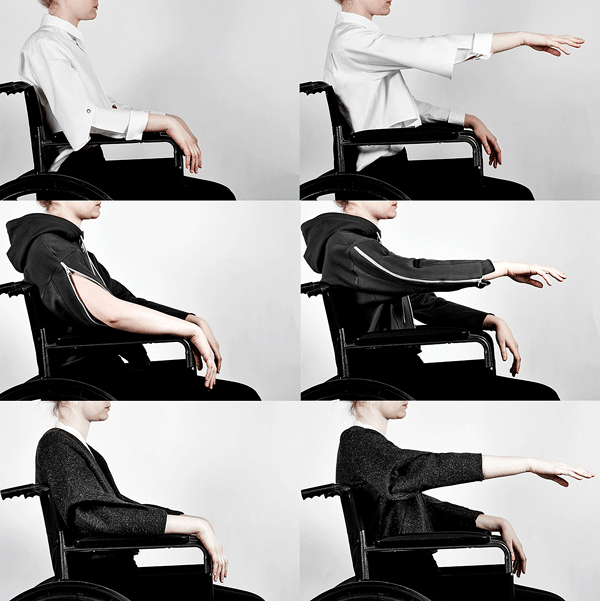

Lucy Jones’s 2015 Seated Design collection is a fashion line that questions assumptions of measurements and garment making by repositioning seated individuals at the center. It includes garments that are more functional, attractive, and comfortable for the seated body as opposed to a standing one. Photo: Zhi-Wei.
NH In that sense, do museums and curators have a public mission to create critical discourse for a wider audience? Maybe it is too much too say that they should teach the public, but we can refer to the old idea of museums as a source of enlightenment.
PA It depends on the curators, but I definitely do. I might seem really corny, but I can tell you, the best and toughest judges of contemporary design shows are kids age six to fifteen. With my team, we always try to make shows that work on at least three levels. They have to work for our community, because we want to contribute to the architecture and design discourse. We need to think of the trustees; we don’t want to “please” them, but we want to make them proud. But my biggest passion is the public. In a place like MoMA, I know that eighty percent of my public is there to see Matisse and Picasso because they have to take the art vitamins the doctors said to take. They don’t even know that my show is there. But they stumble upon the design show, and they stay there two hours. That, to me, is the best. I plan design shows to be particularly attractive. They need to draw people in. There needs to be honey, or some sort or vinegar, or wine. You need to come in and be able to recognize a little bit of yourself.
NA As the collector of the “@” sign, you’re very aware that design is not always created by designers. Do you feel like there is still the need within the community of design practitioners to wake up and see that design is everywhere? What has been the sort of feedback you’ve received from the discipline itself?
PA Not much. Frankly, Silicon Valley is waterproof when it comes to an appreciation of real design. But once again, if there were more design literacy amongst the public, maybe Facebook could not get away with such a bad interface. It’s really bottom-up sometimes.
Positions is an independent initiative of e-flux Architecture.
Category
Subject
Positions is an initiative of e-flux Architecture. This interview took place during the e-flux conversation series Practice at Milano Arch Week 2018, held at the e-flux Teatrino pavilion designed by Matteo Ghidoni—Salottobuono, made with the help of the Friuli-Venezia-Giulia (FVG) Region and by Filiera del Legno FVG (with the coordination of Regione FVG and Innova FVG).
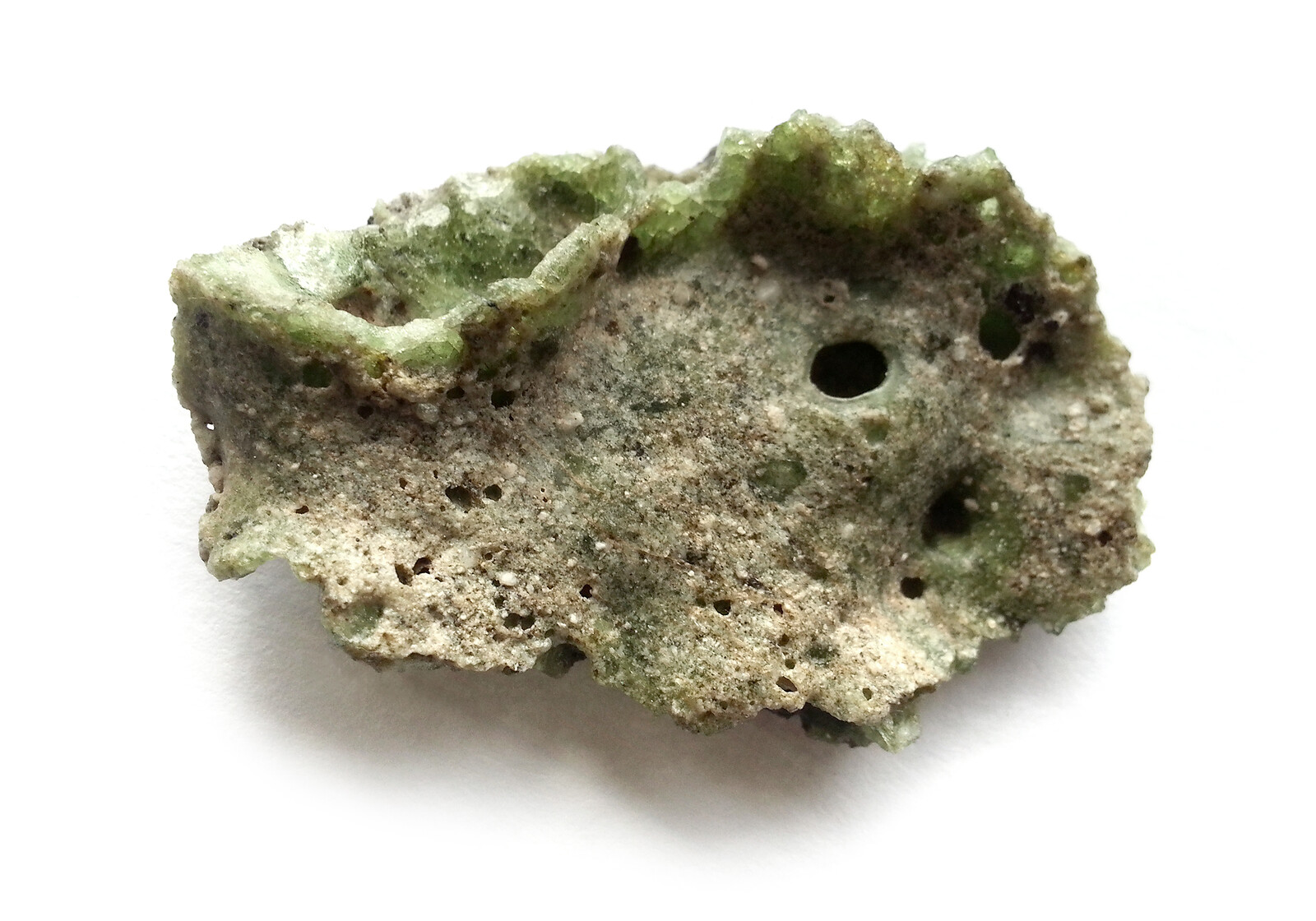




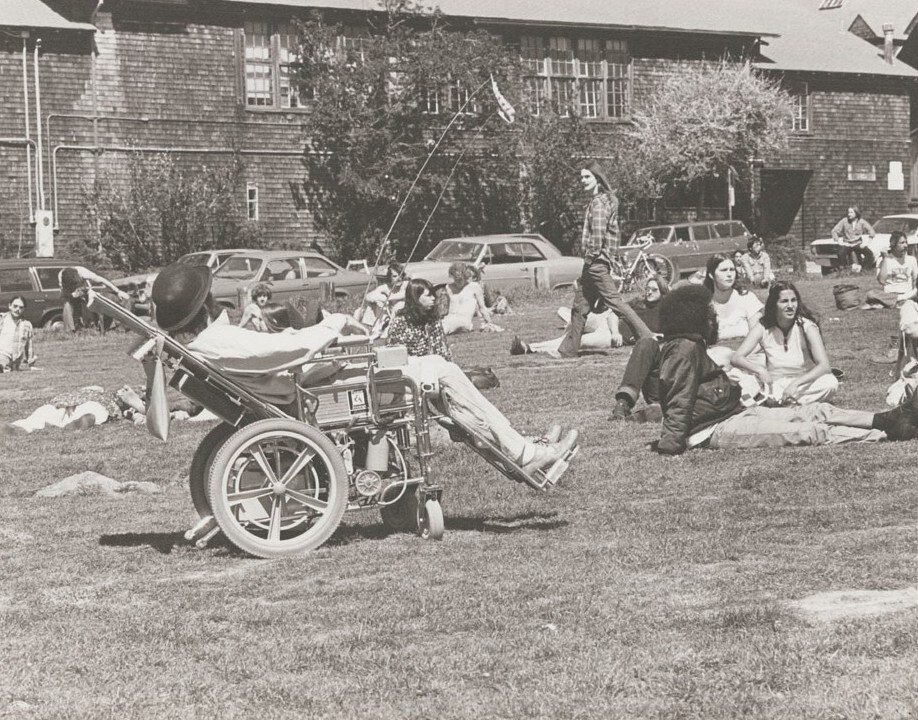
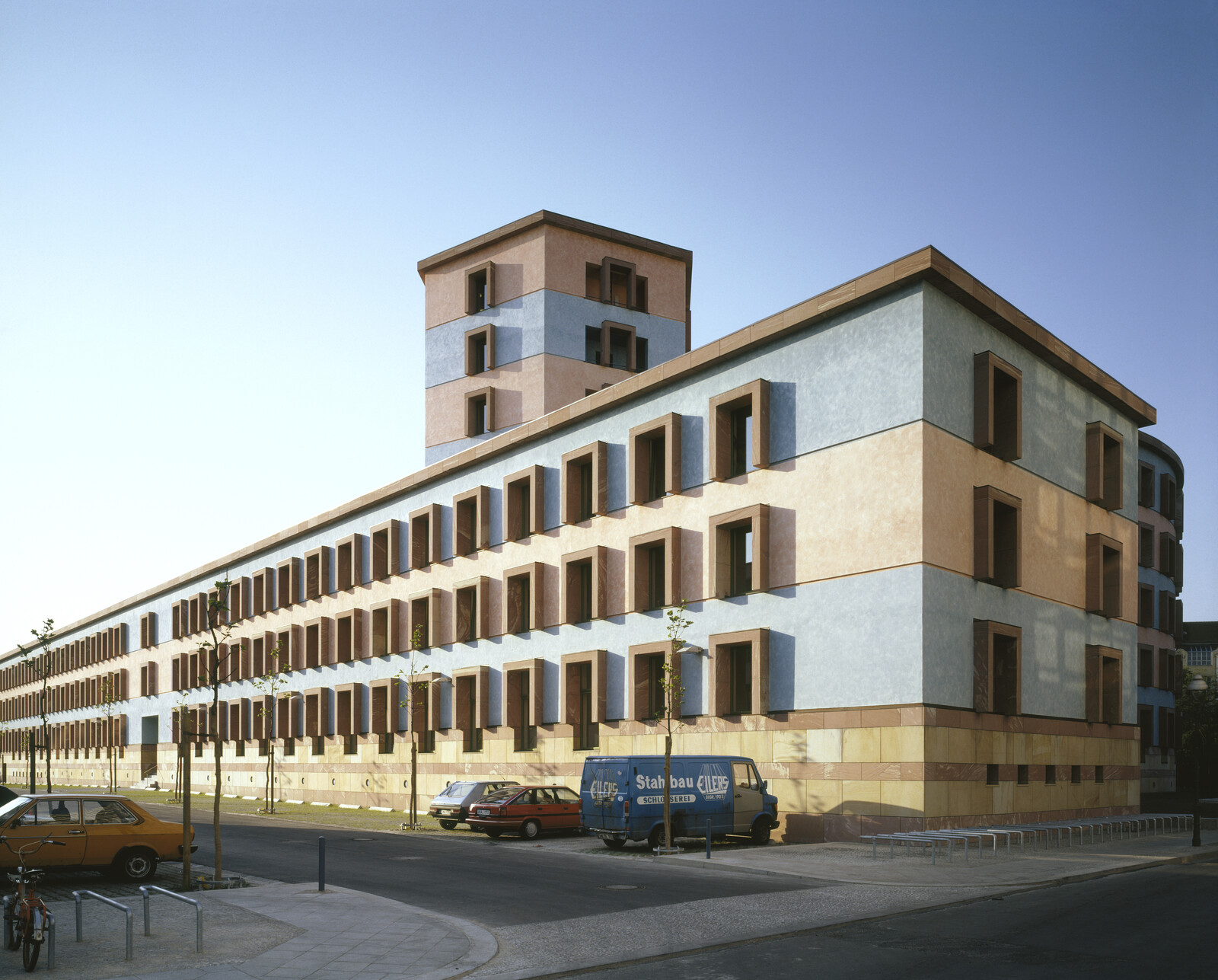
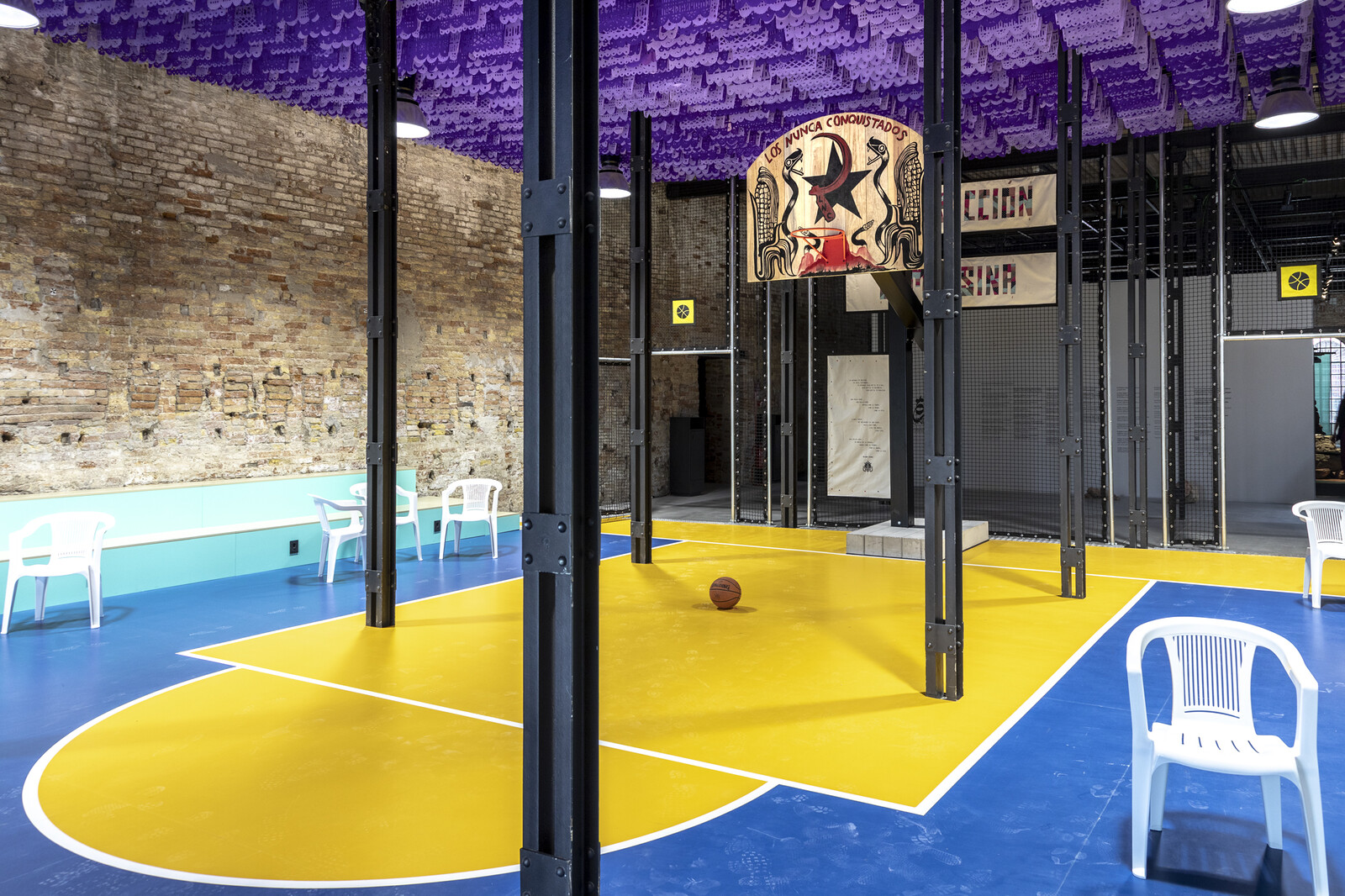

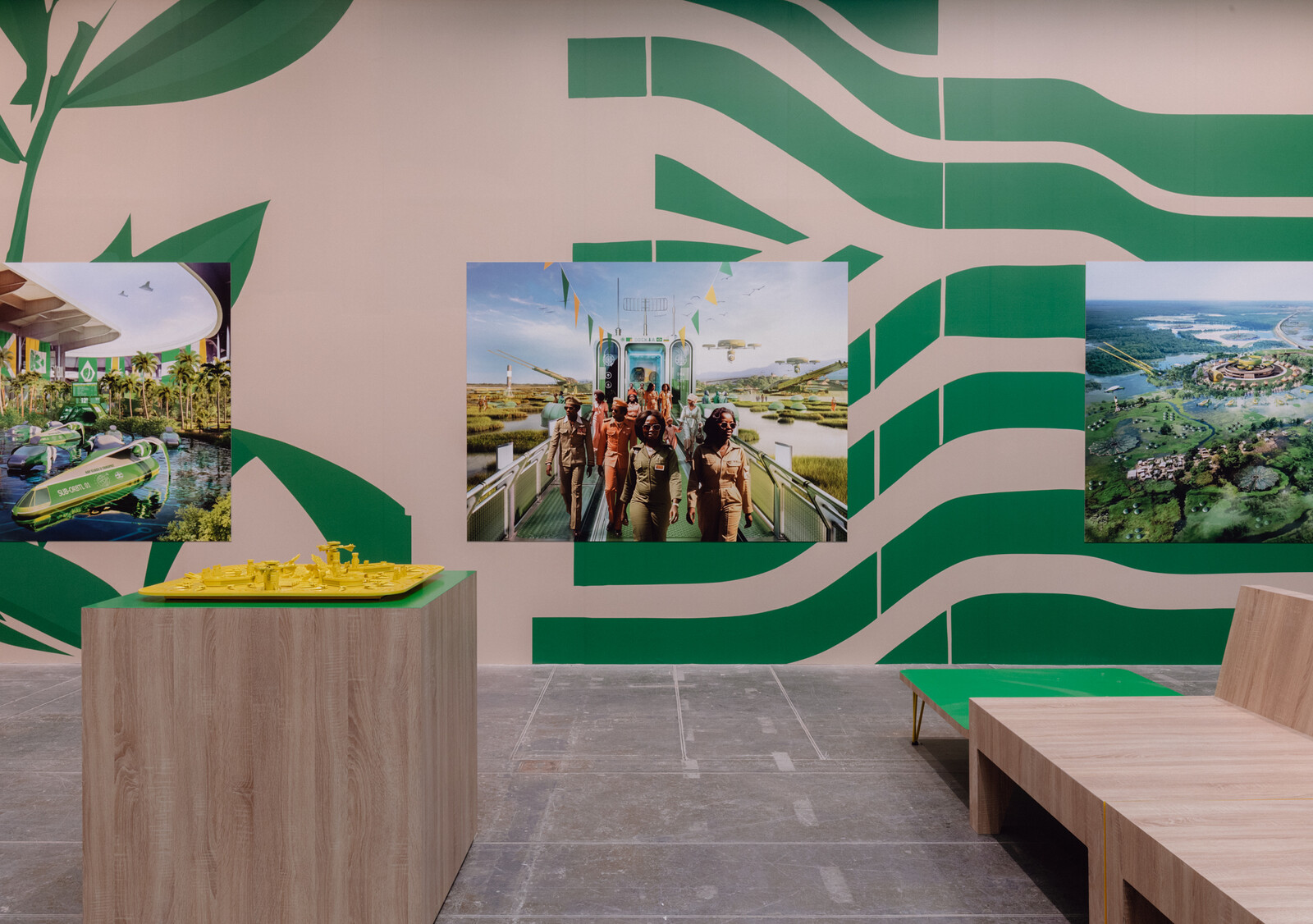


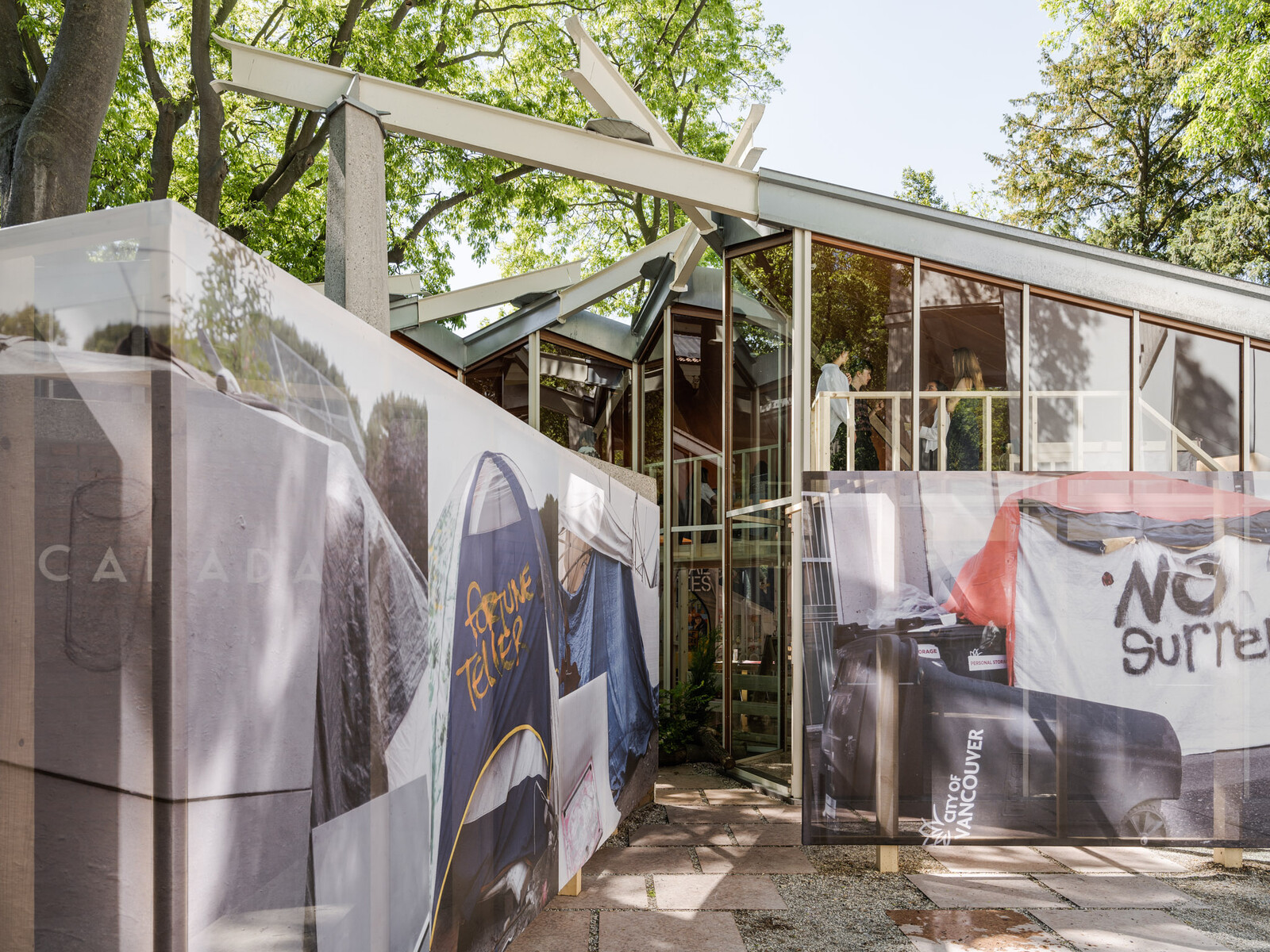
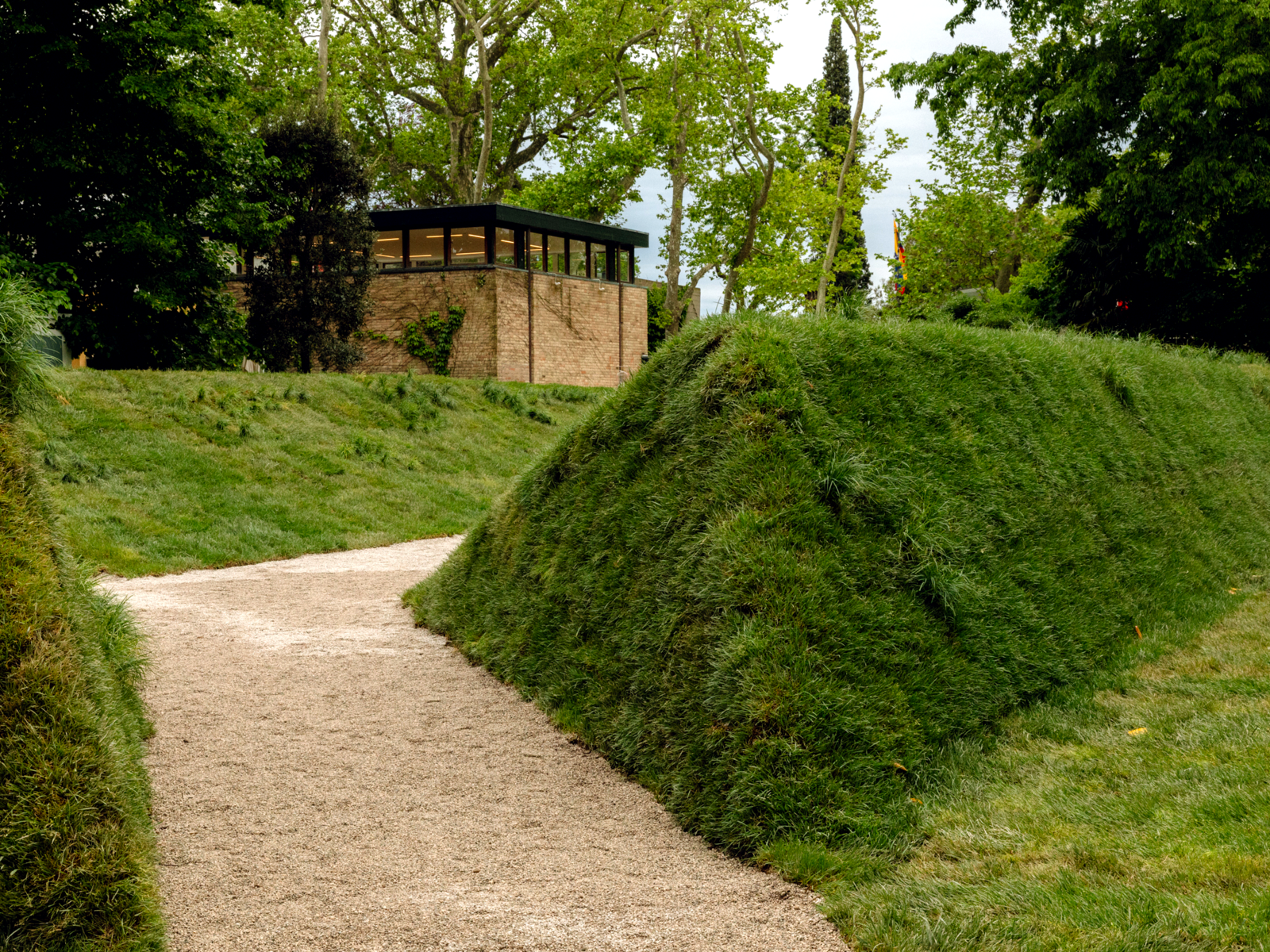
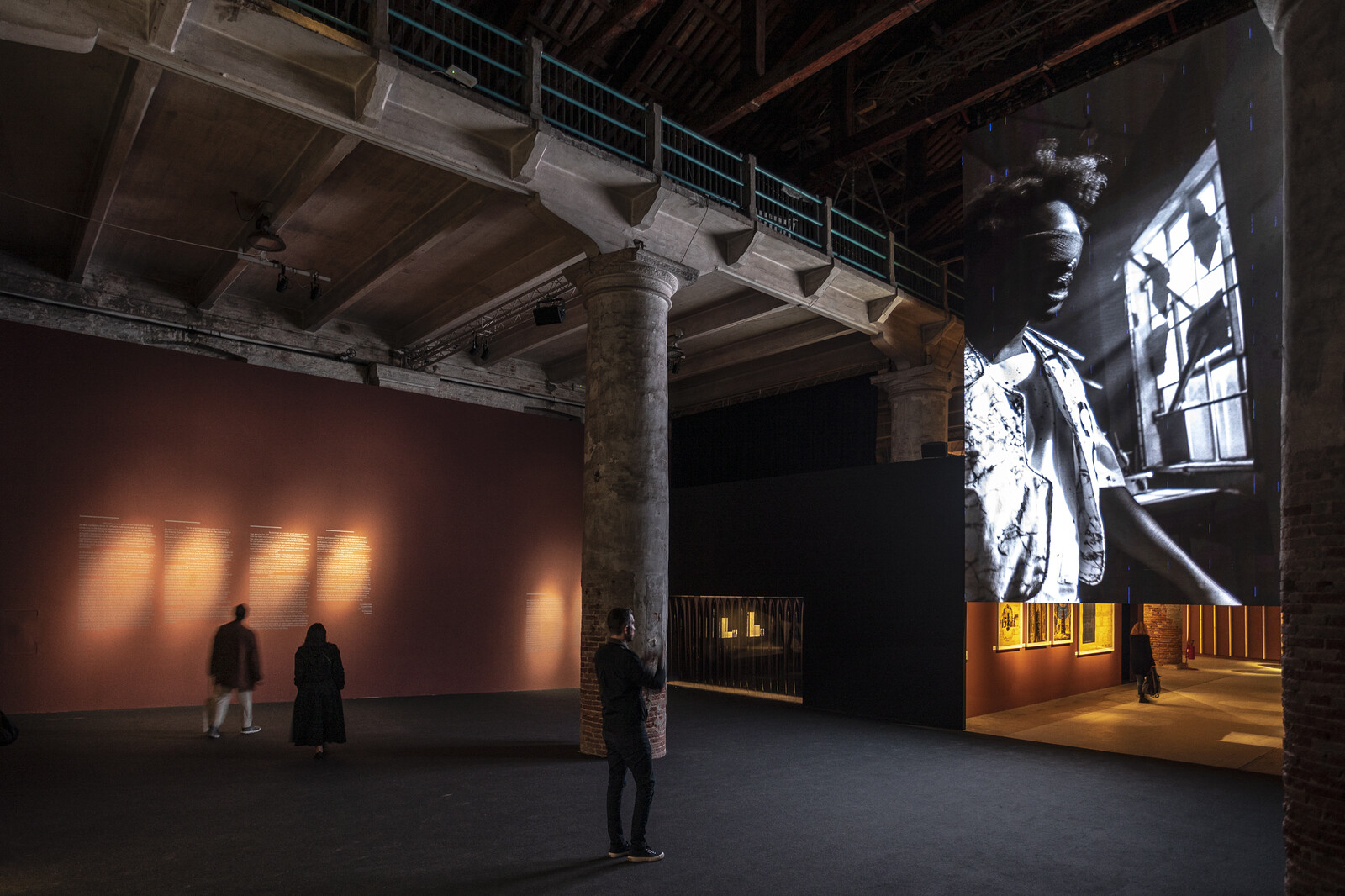
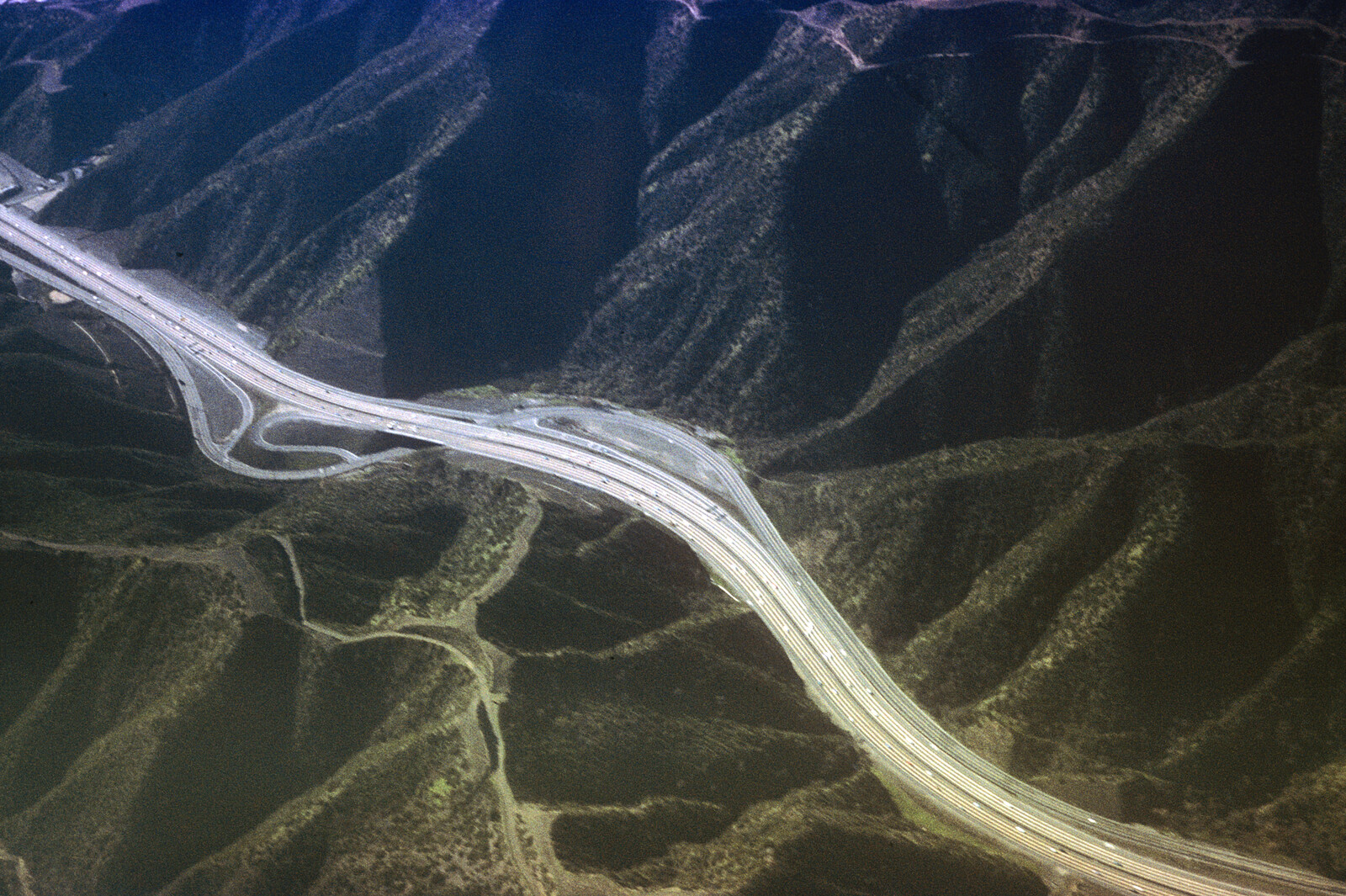
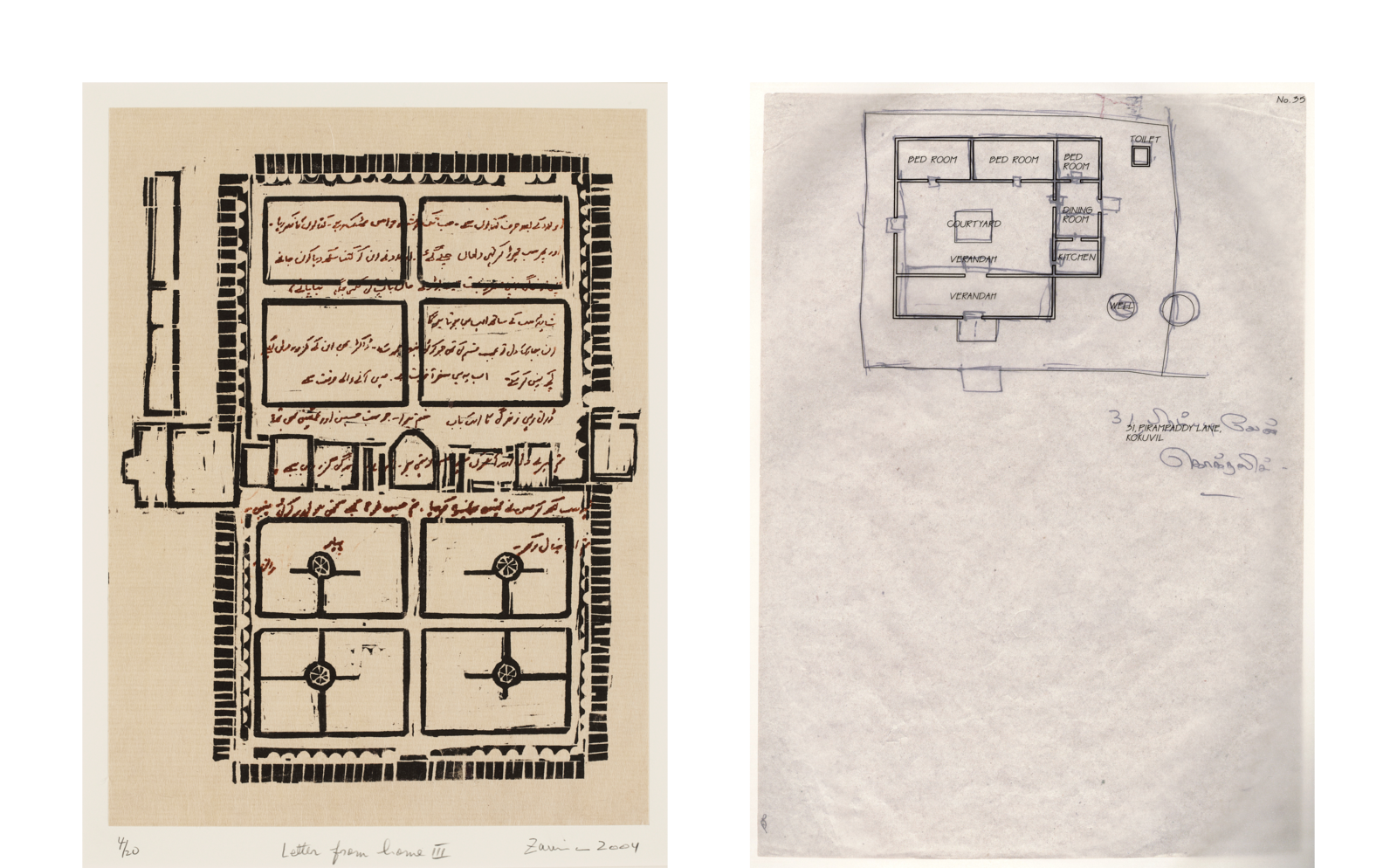


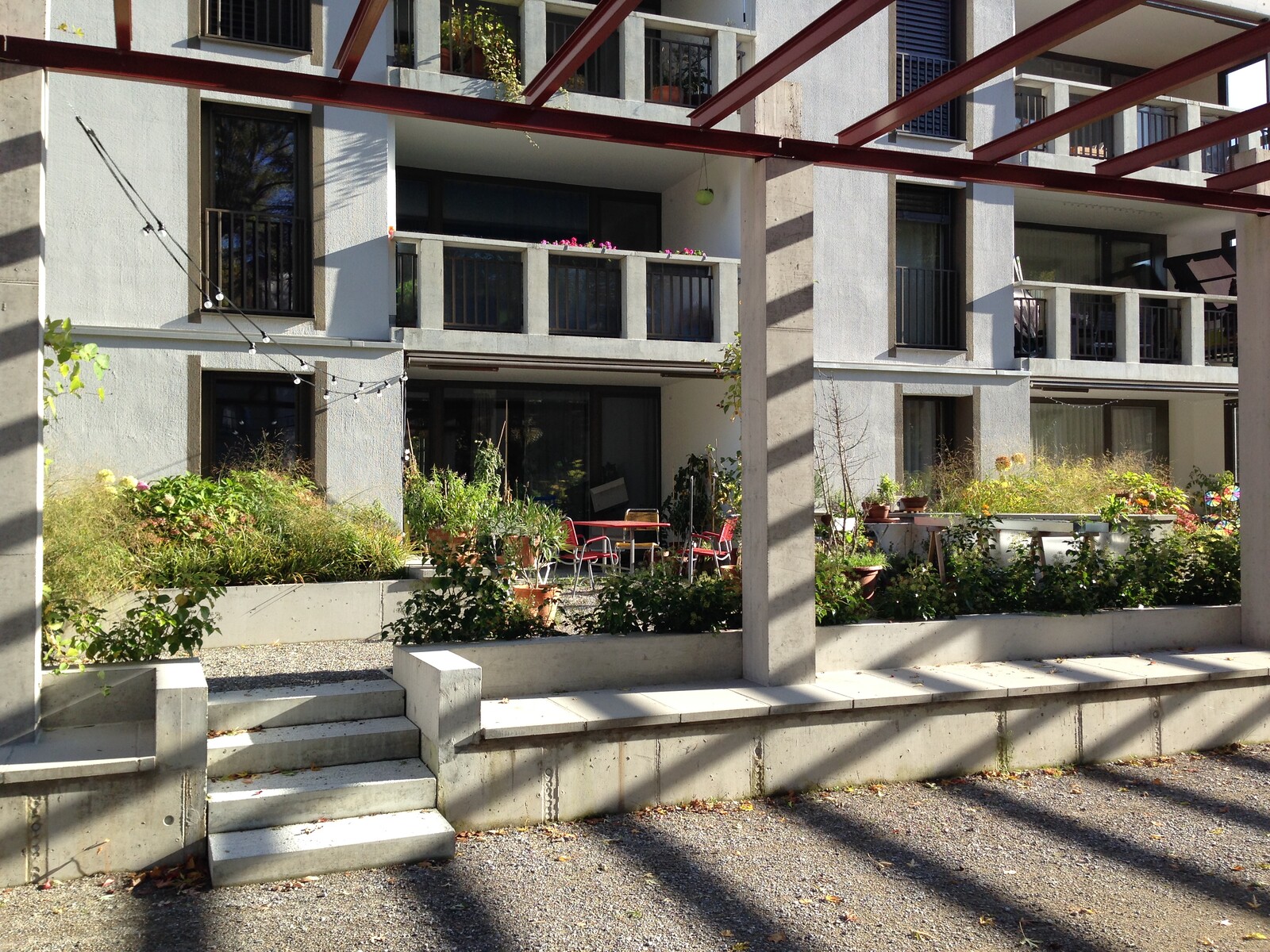

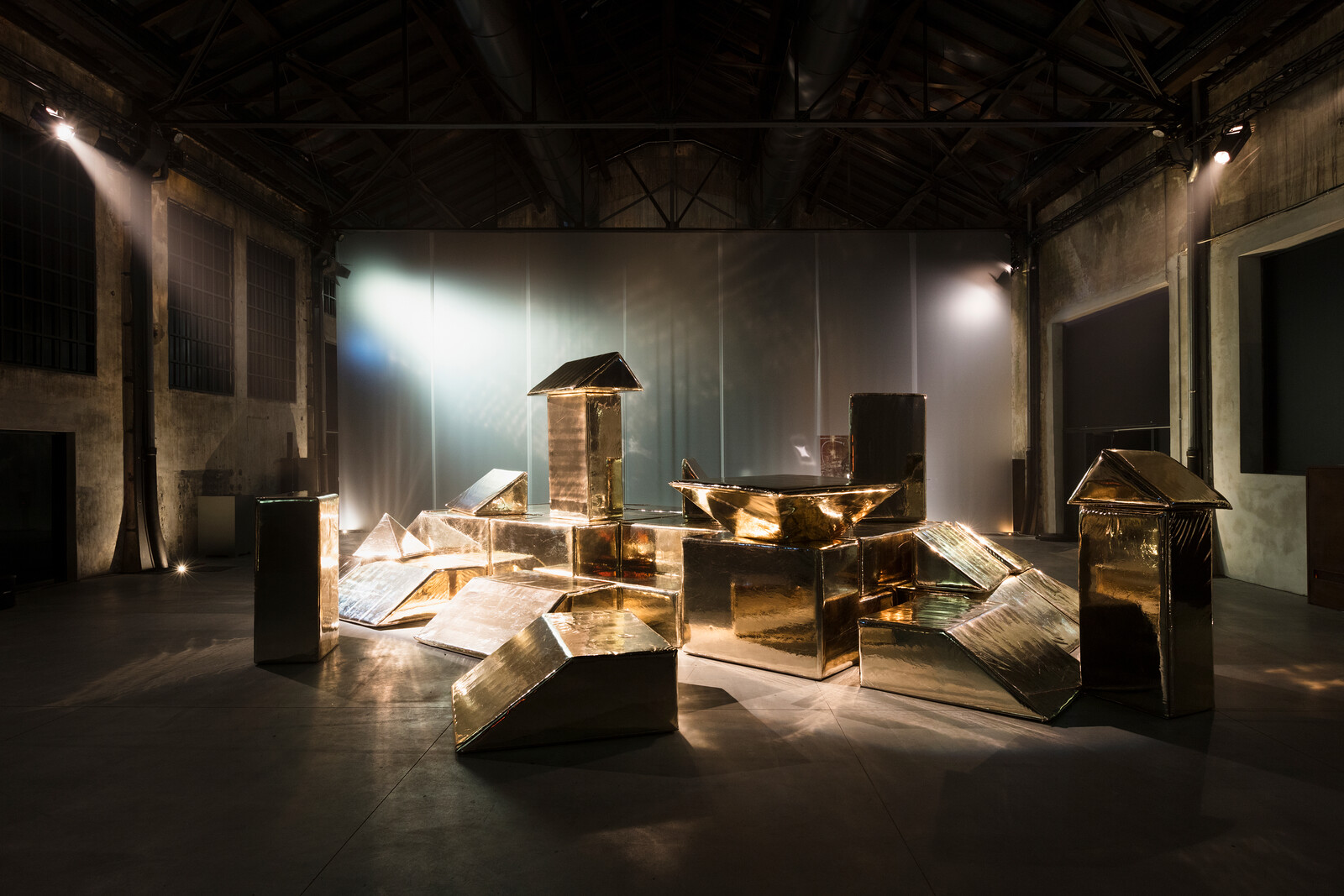
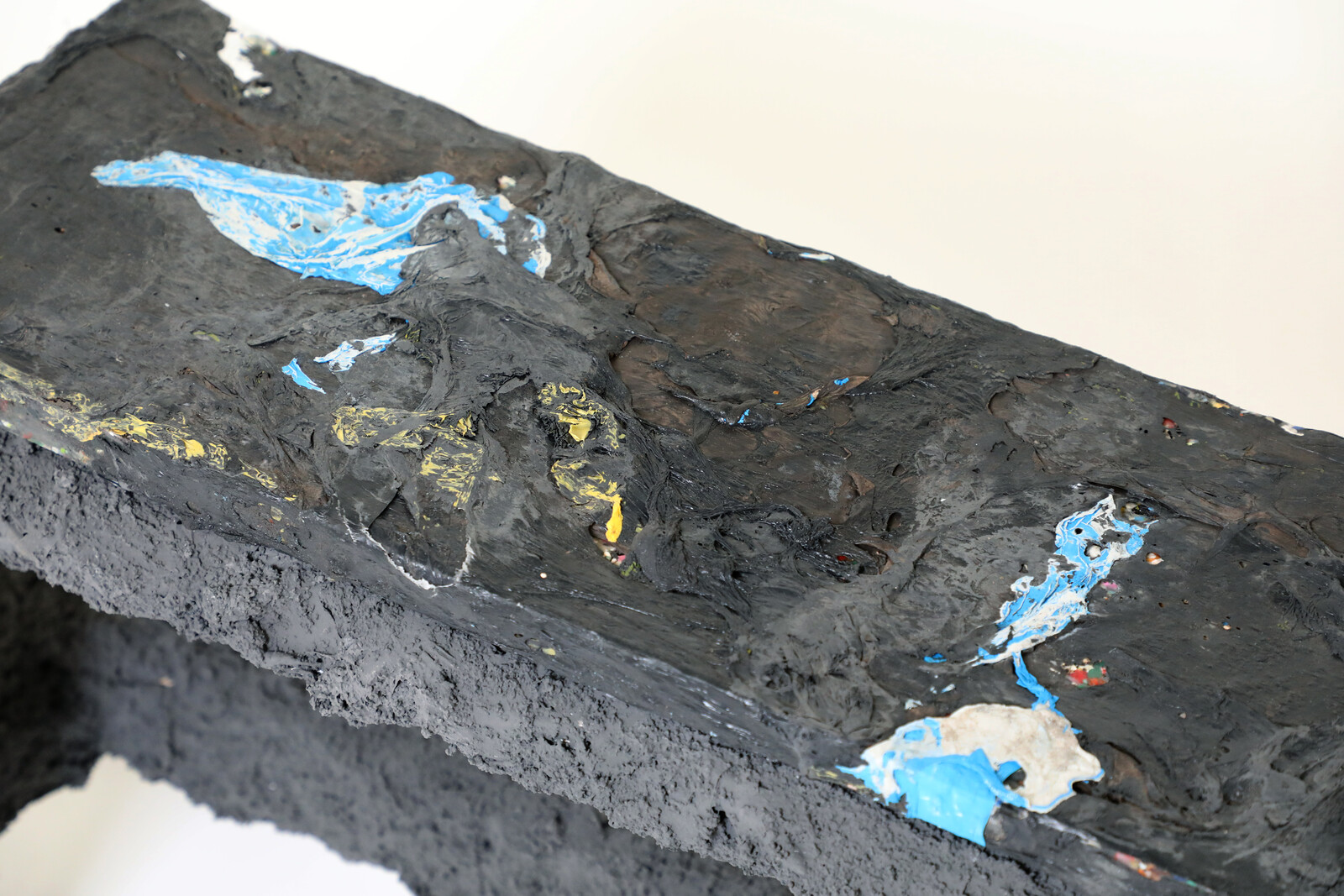
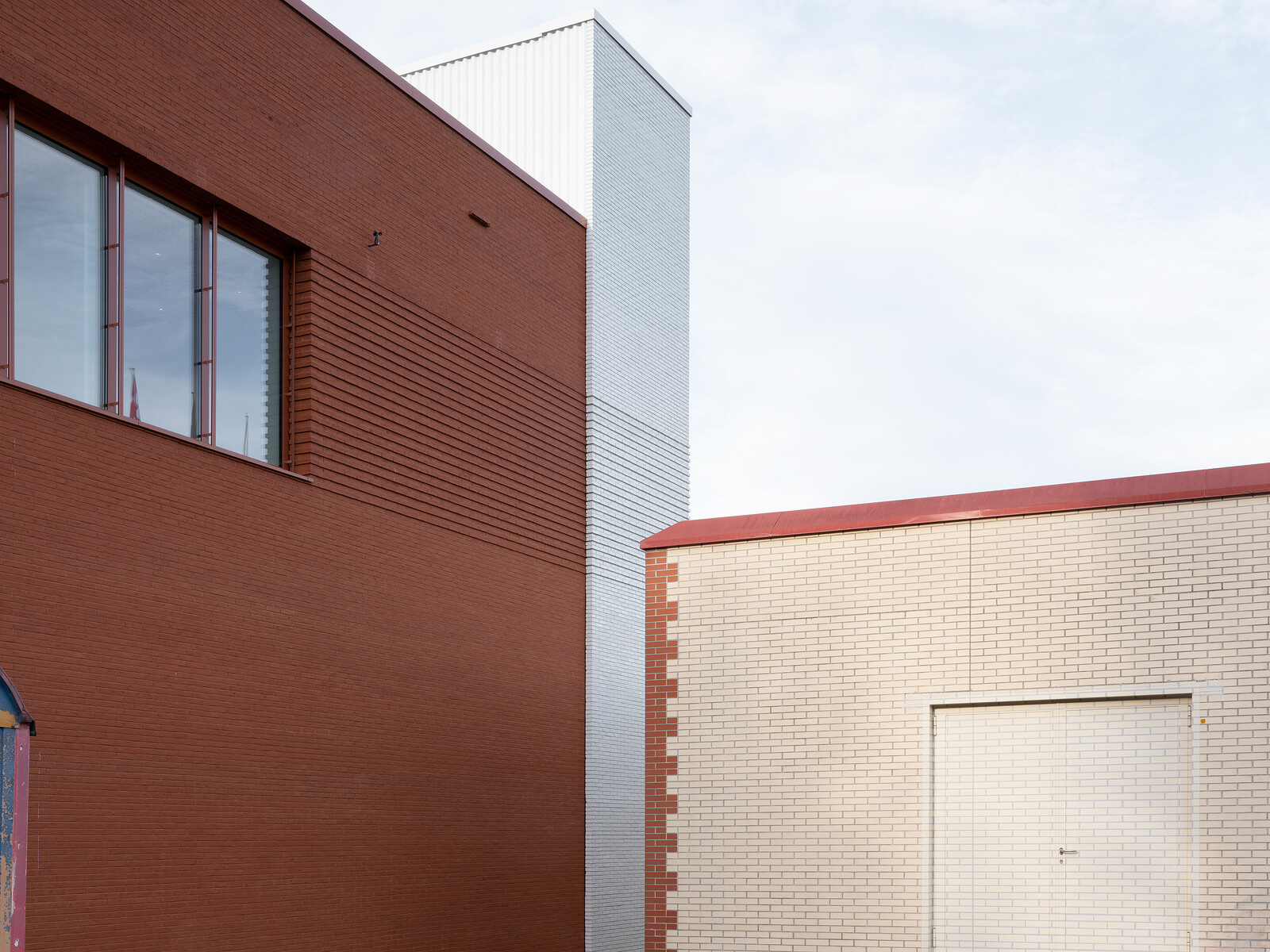
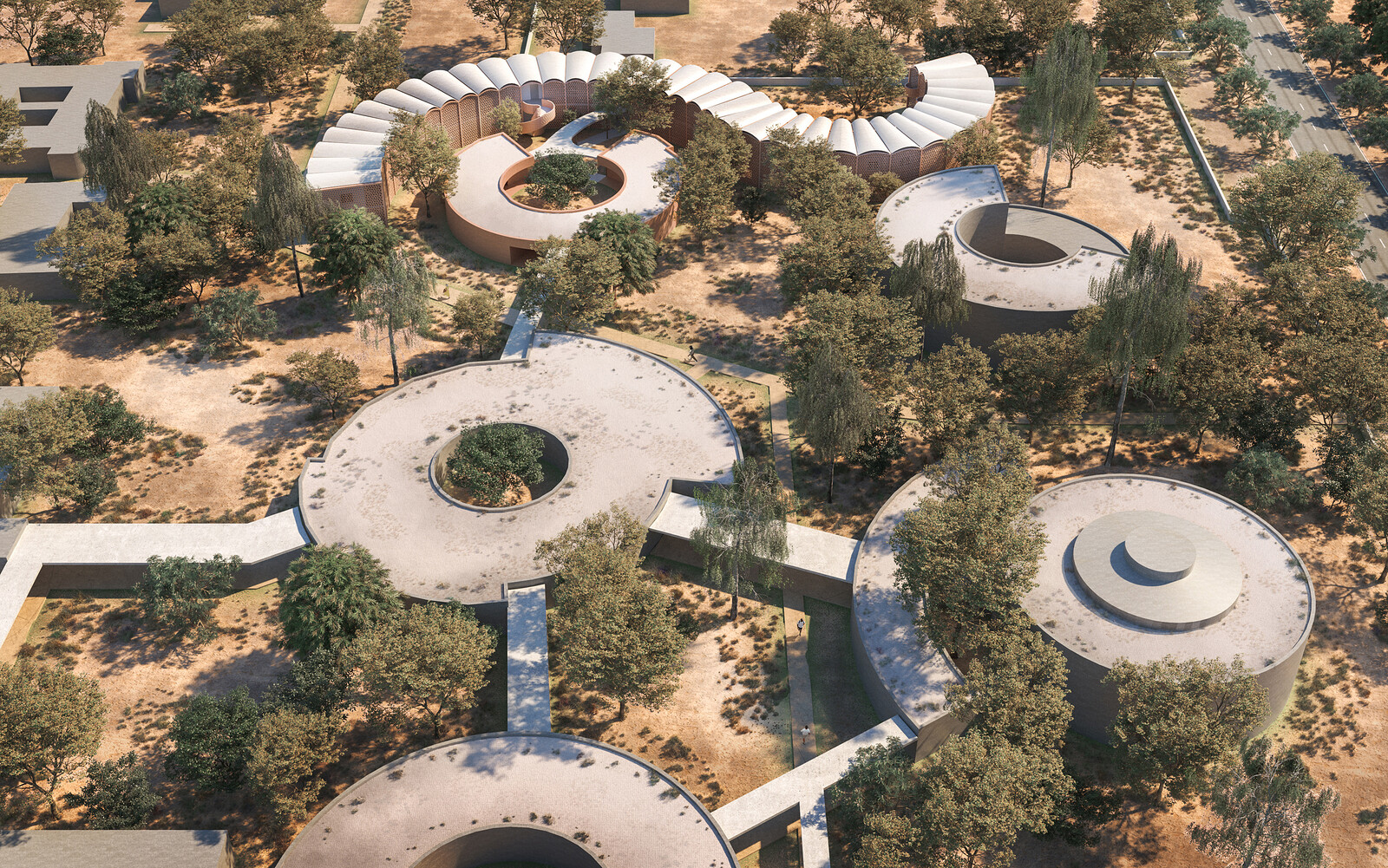

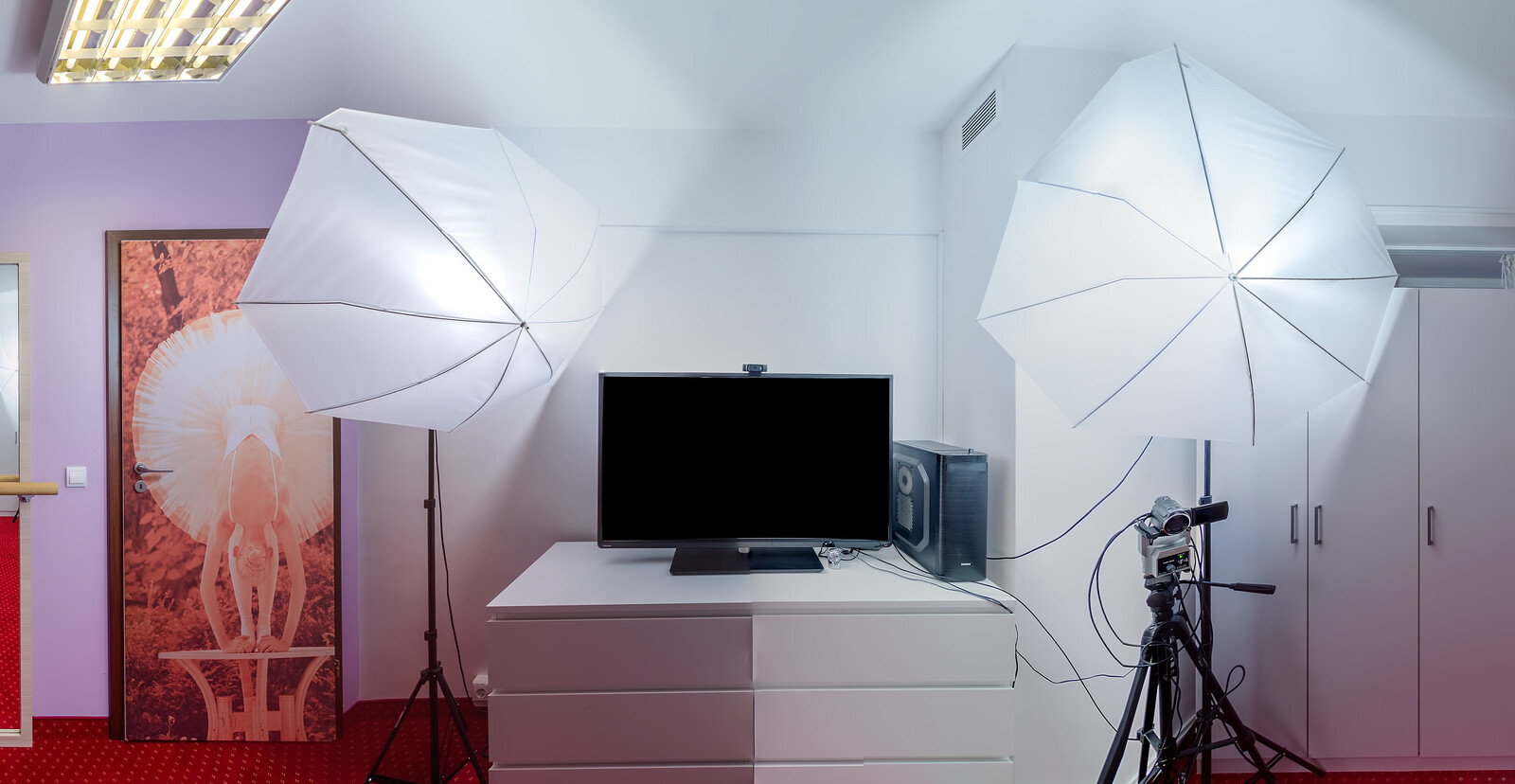

(2014).jpg,1600)

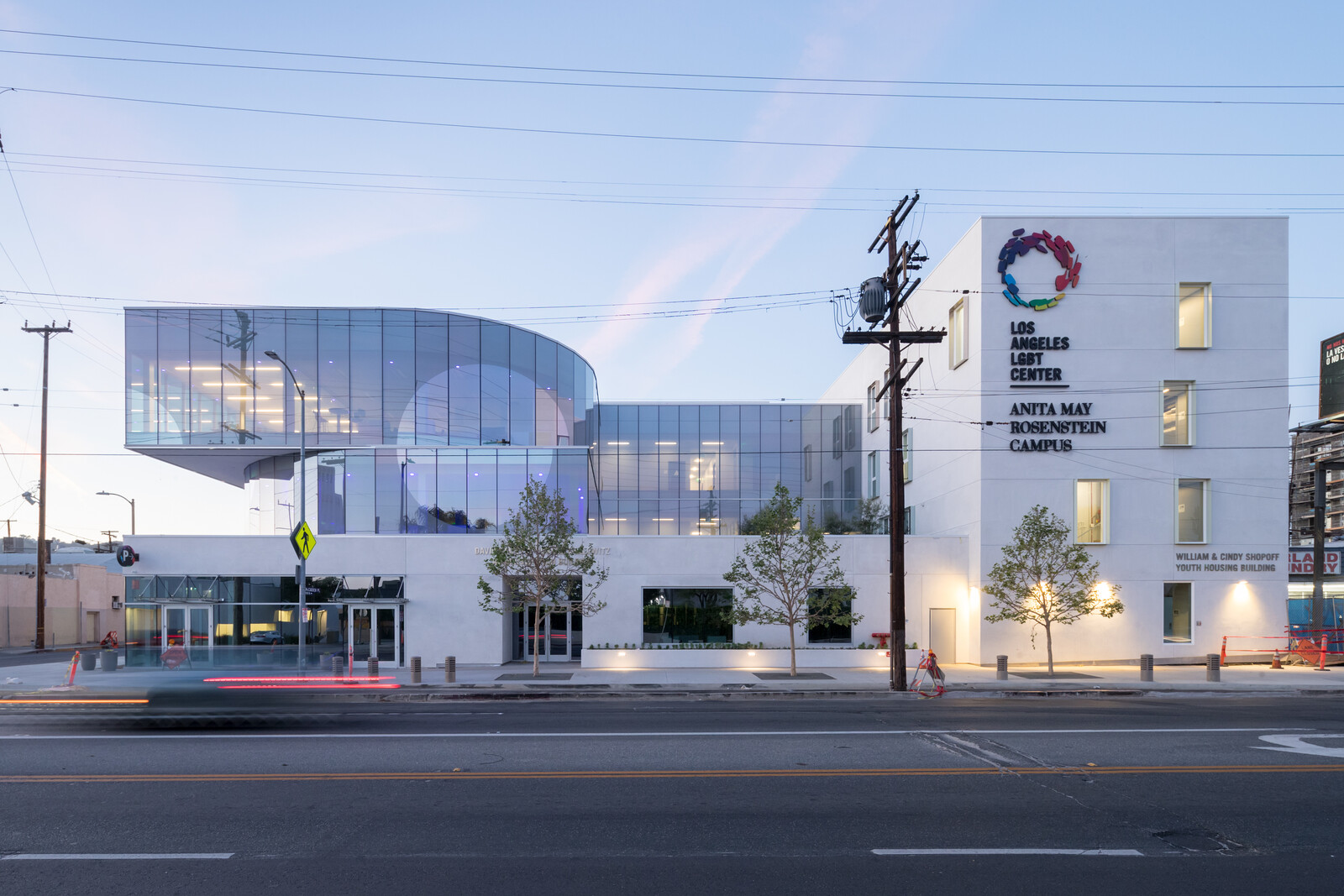
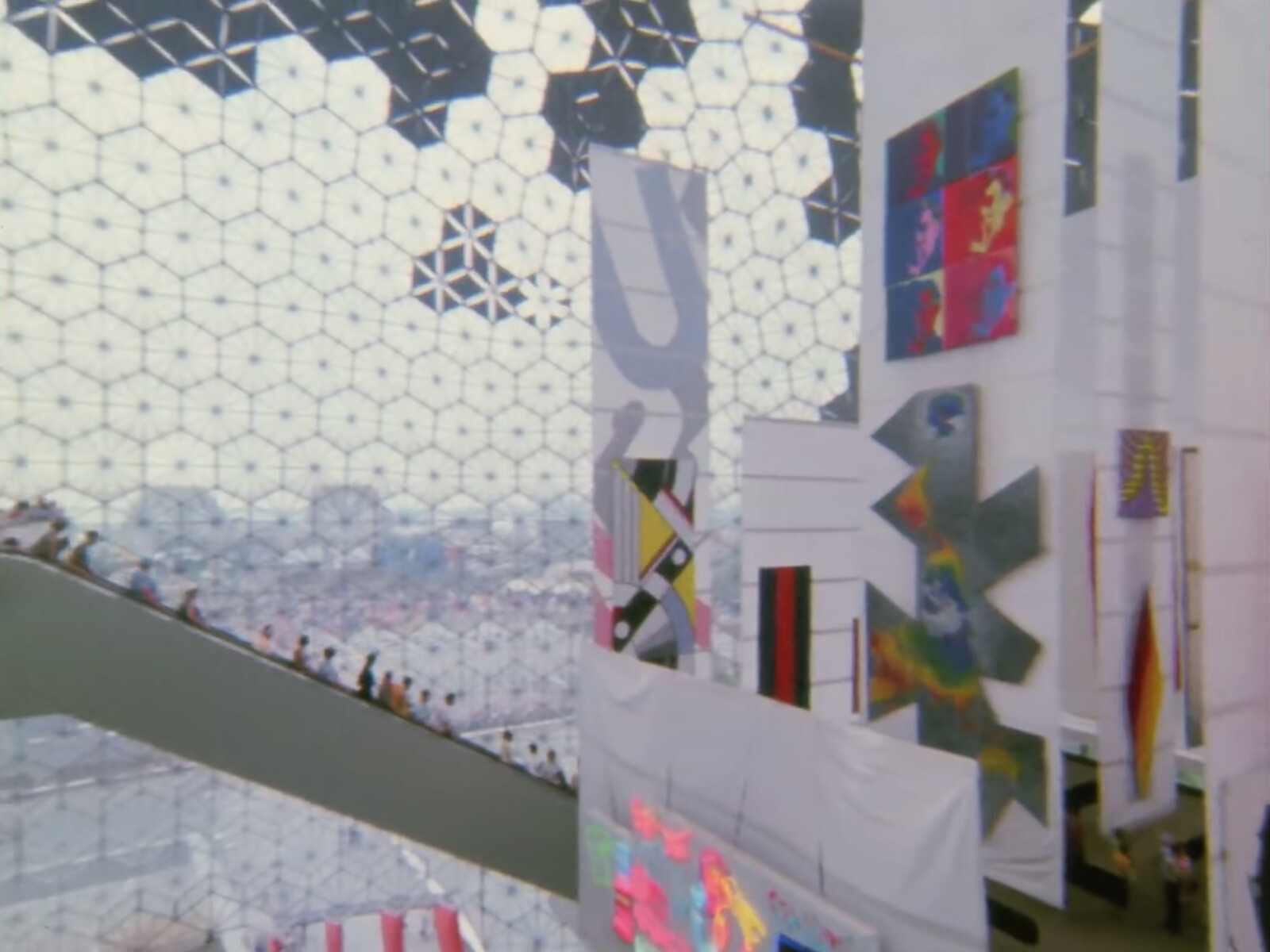


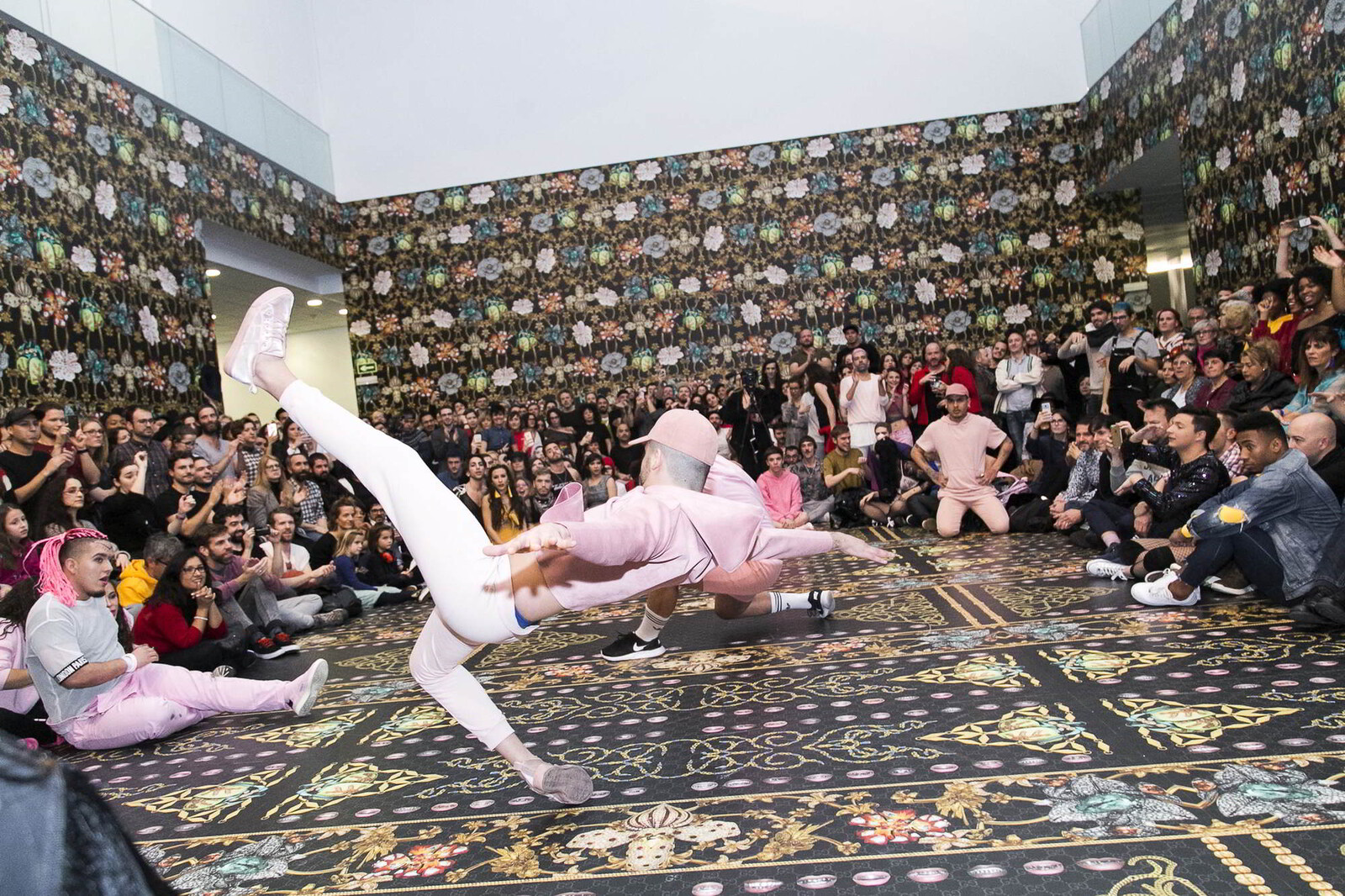
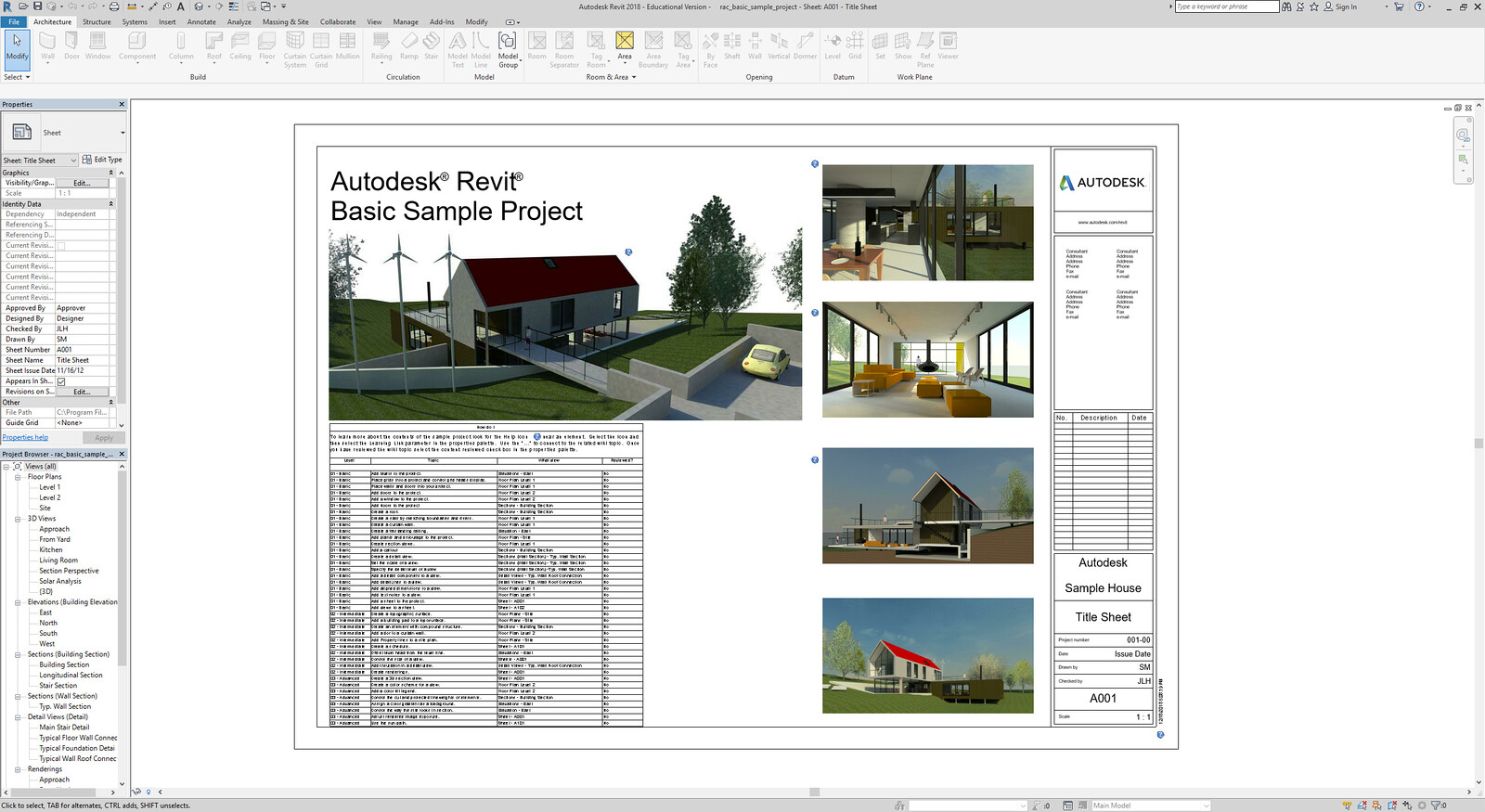



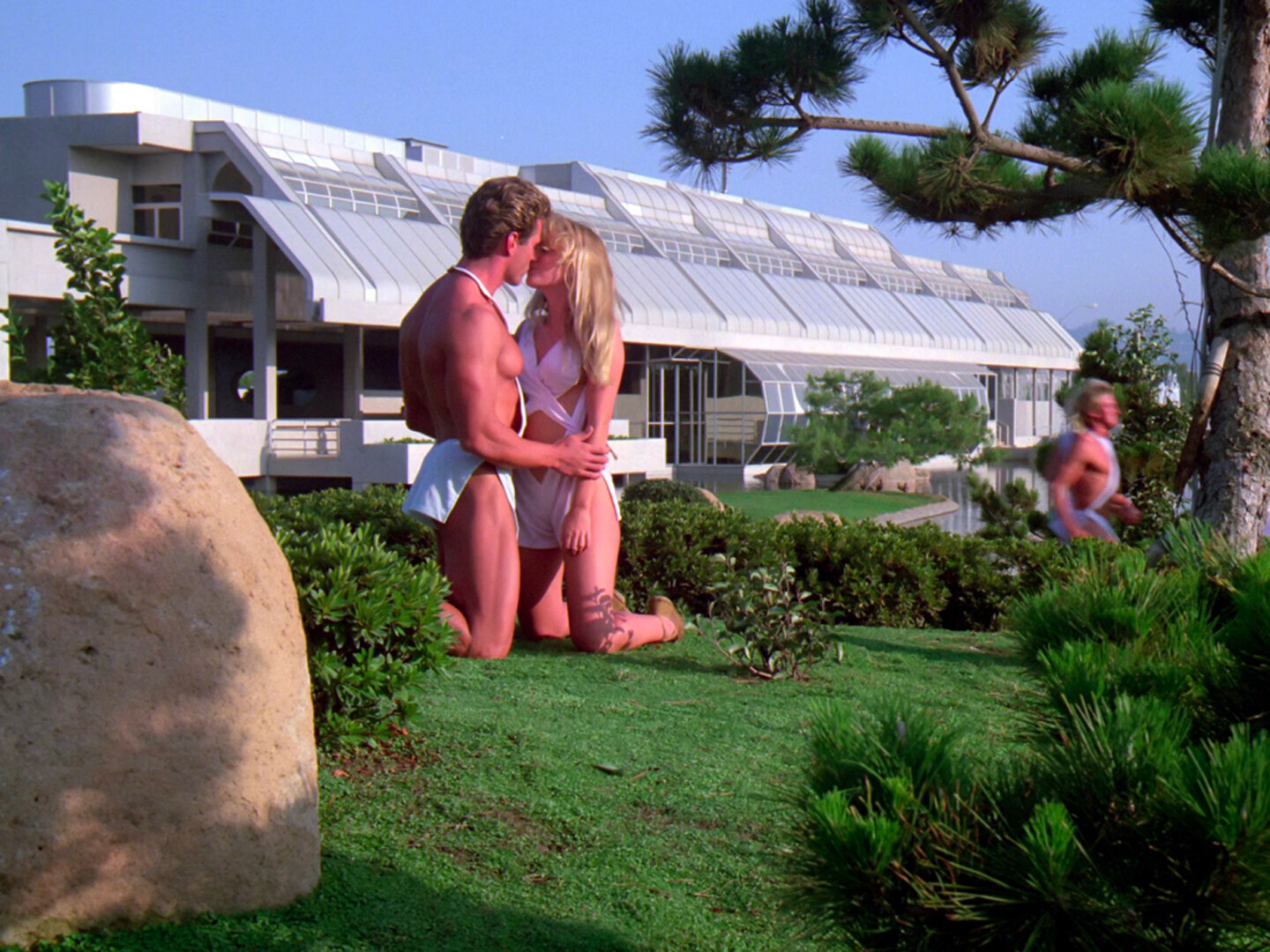
,-2003,-srgb.jpg,1600)
